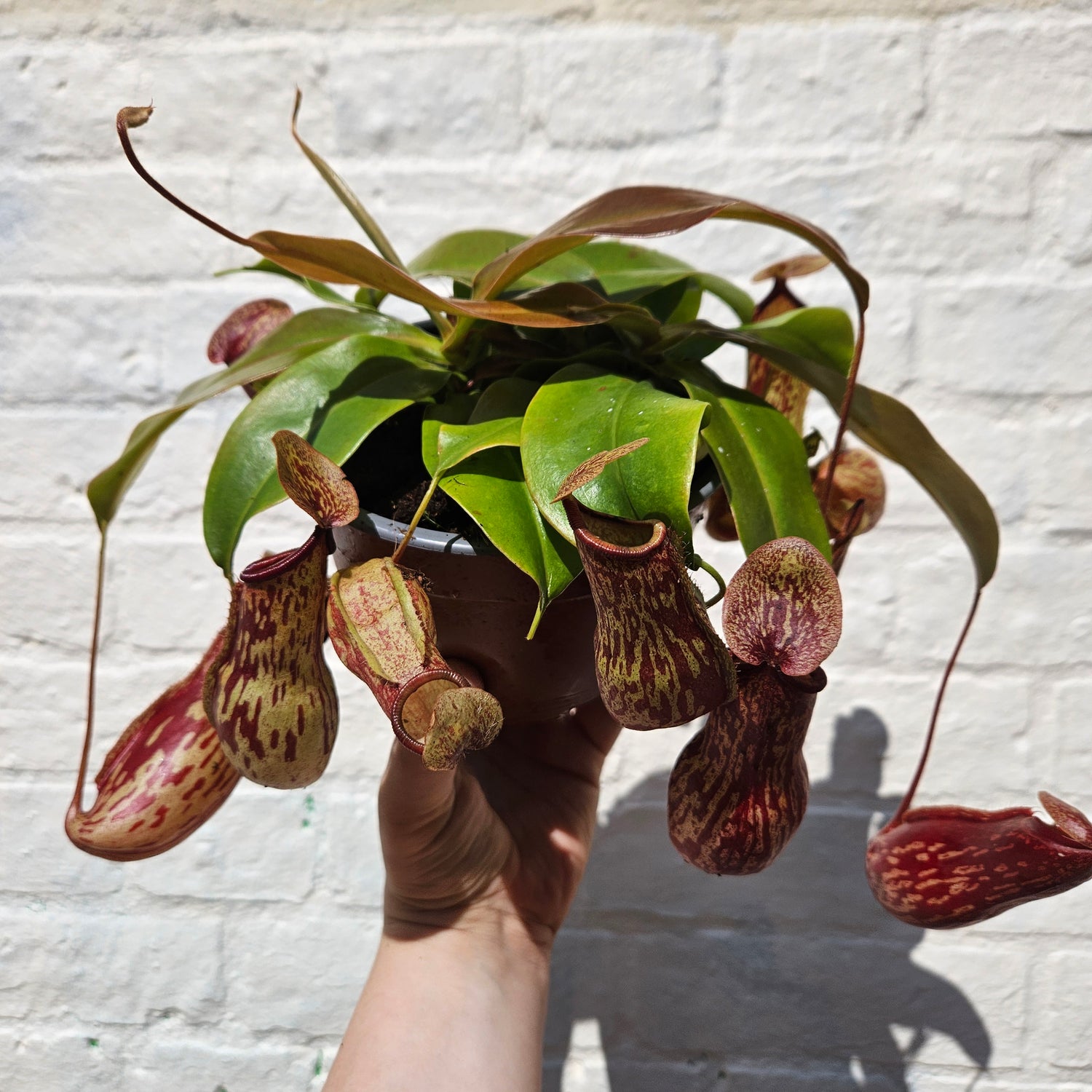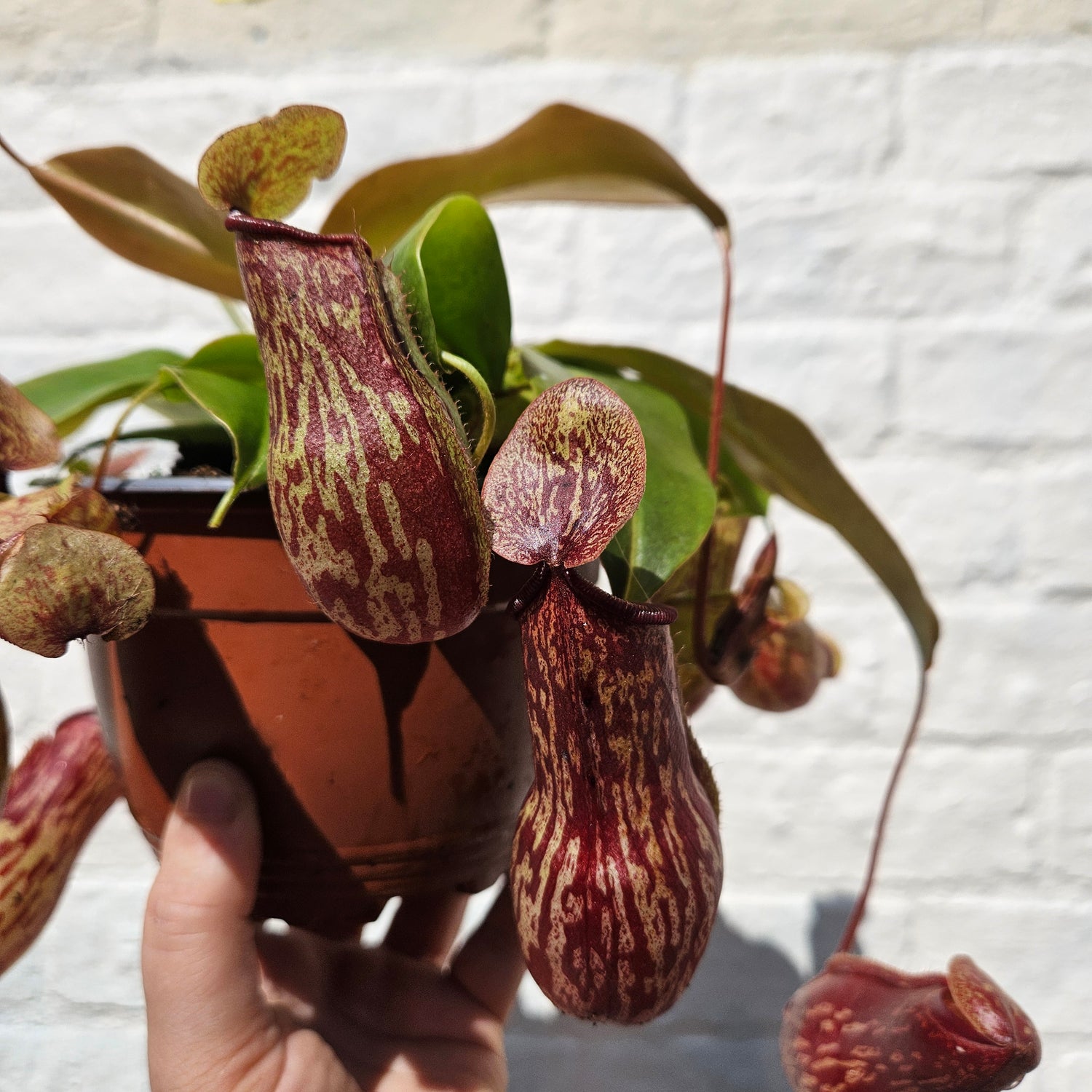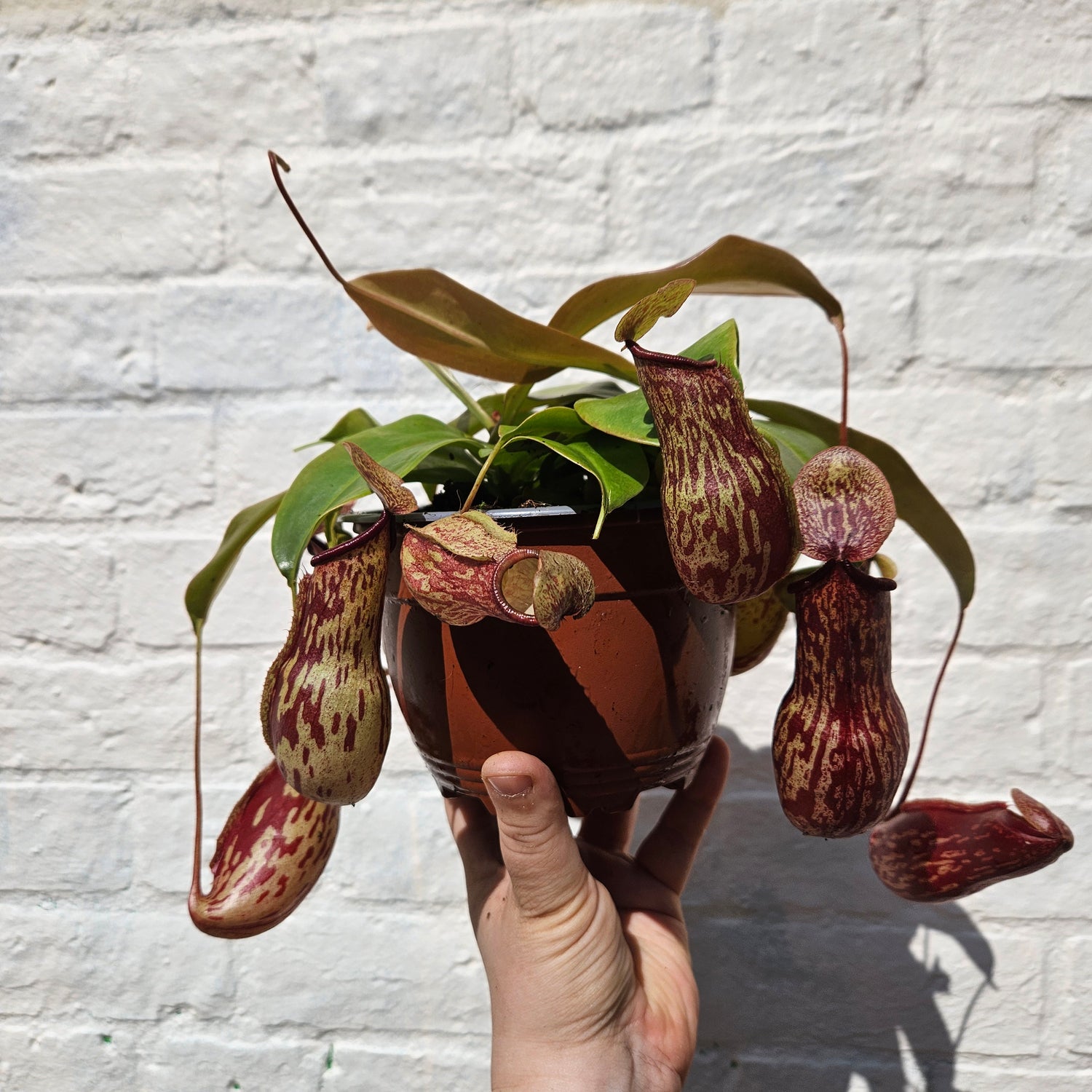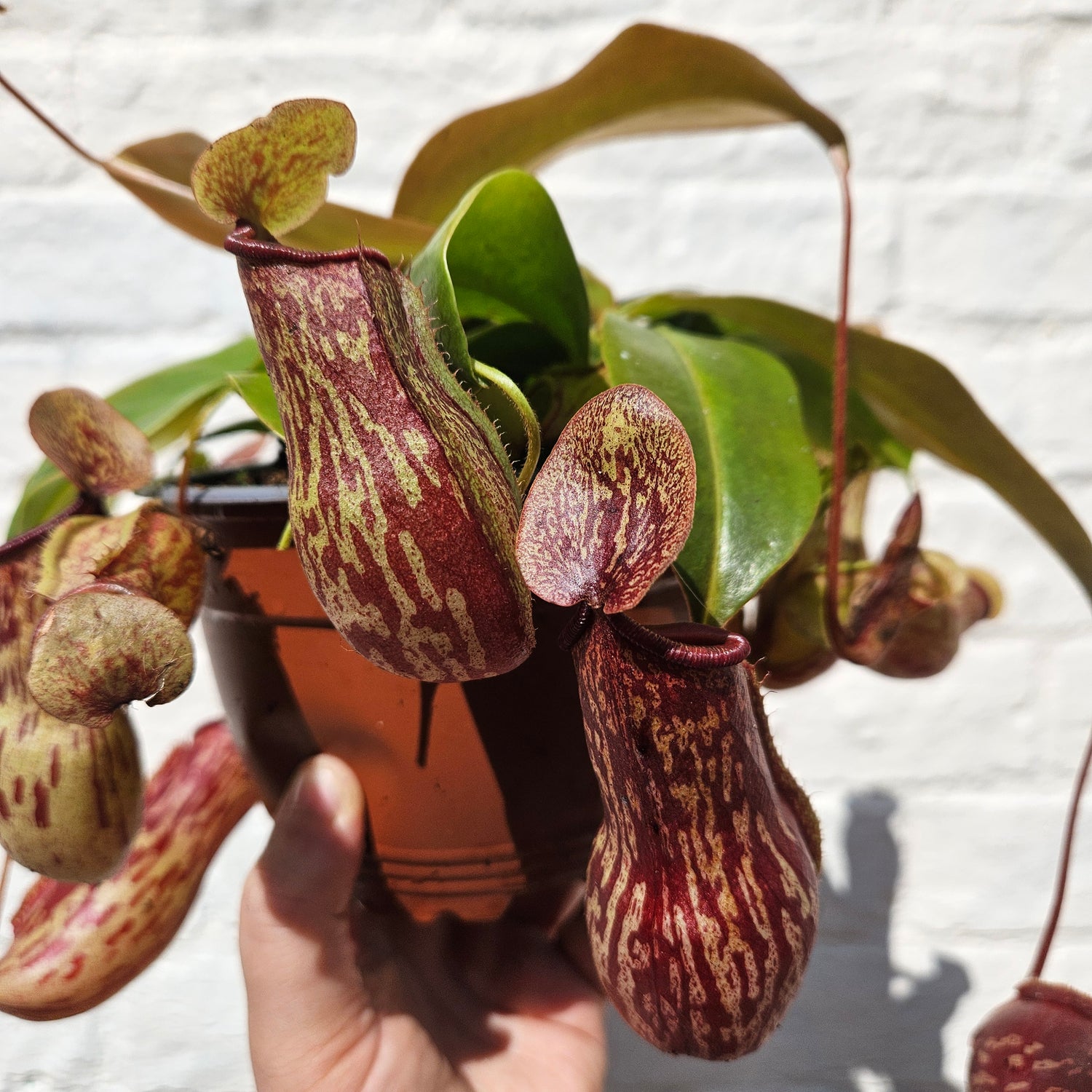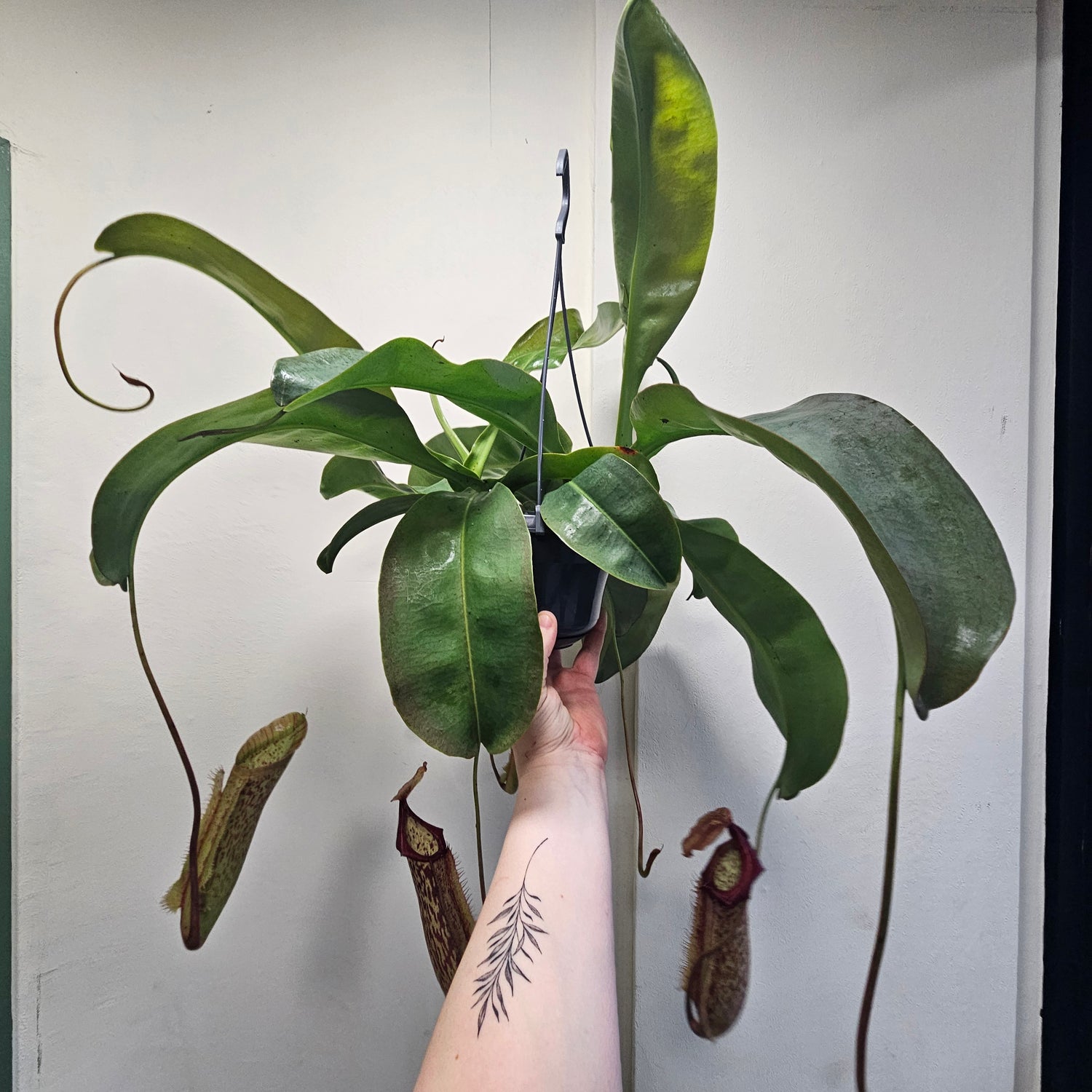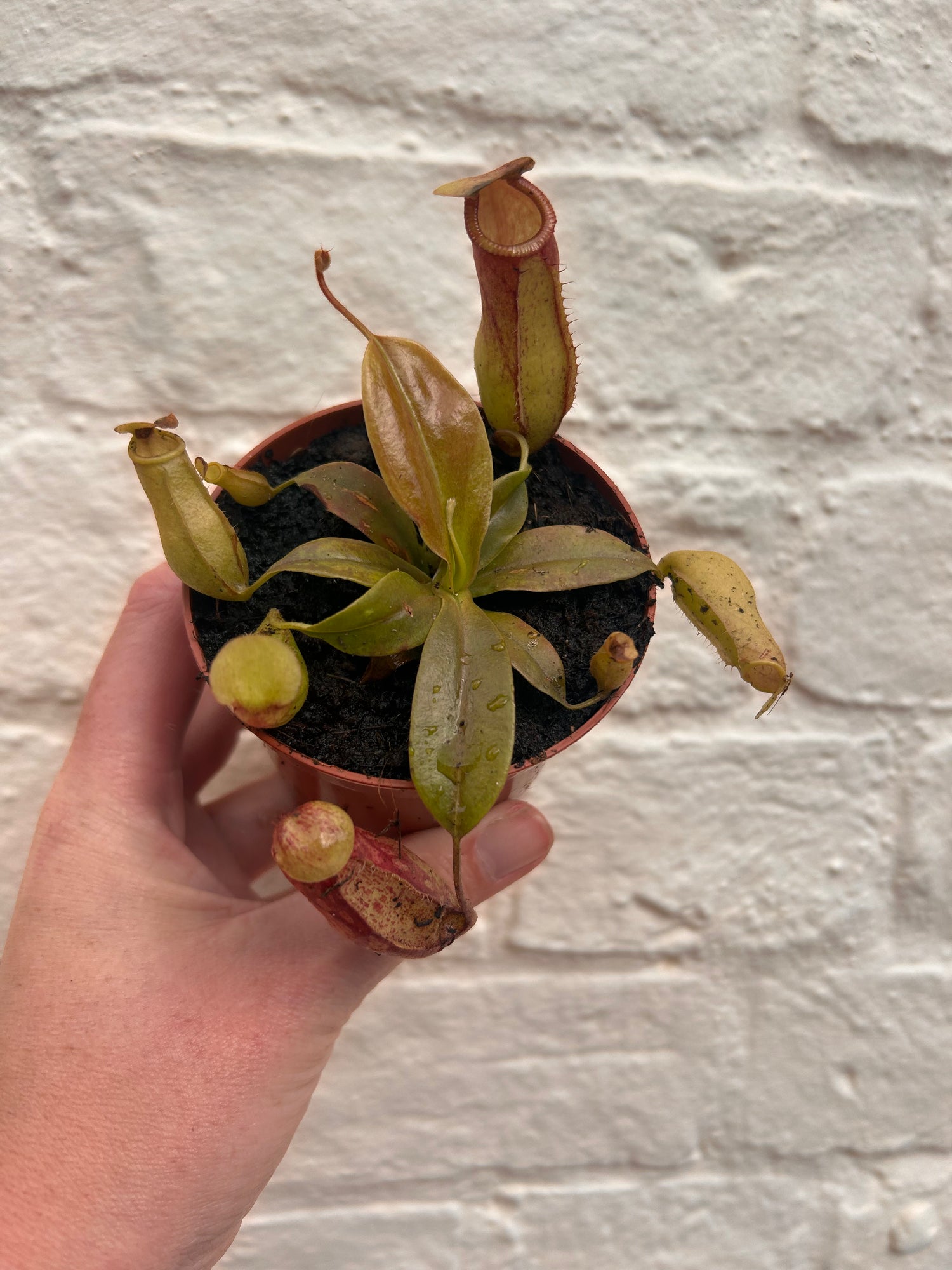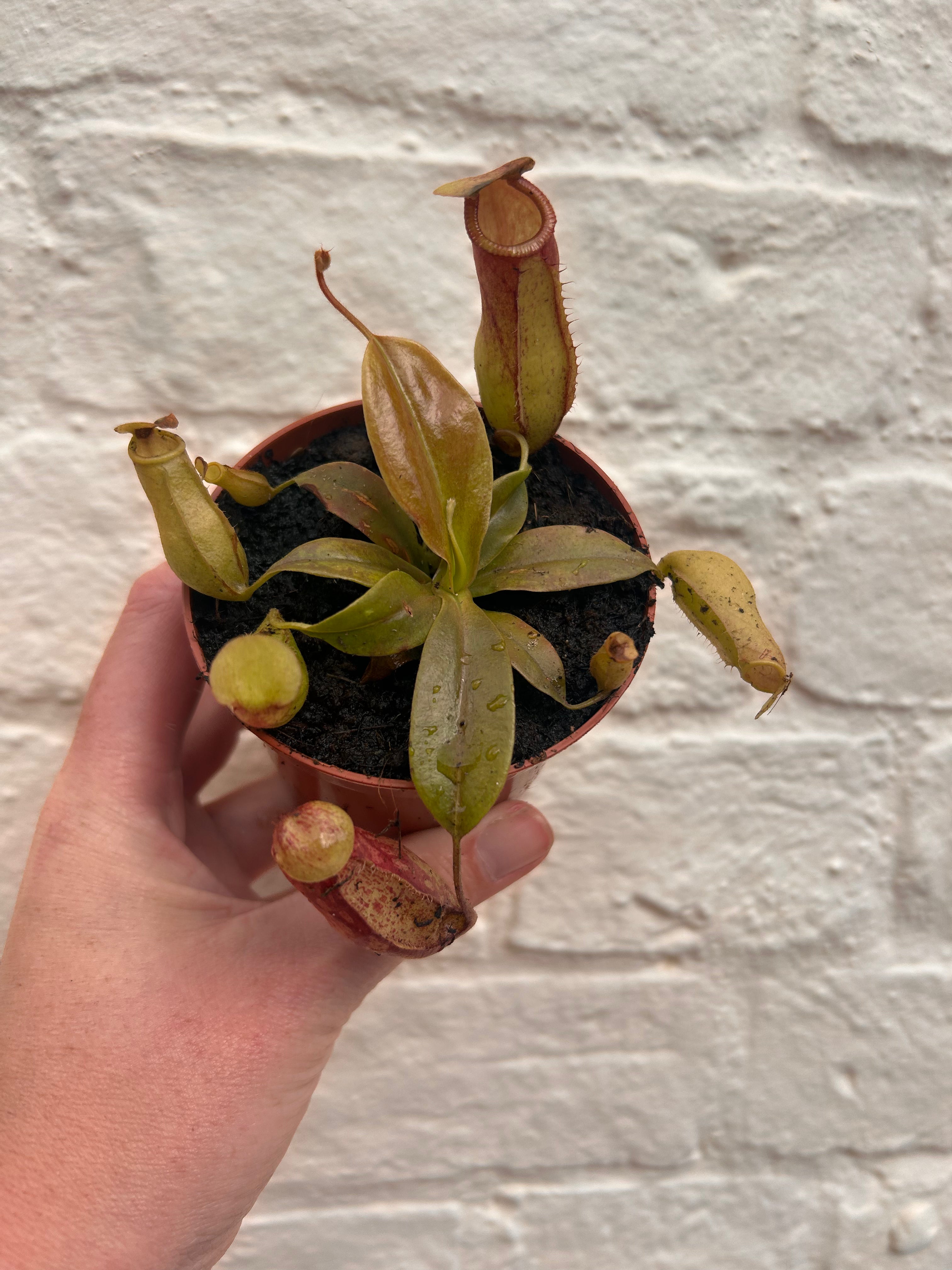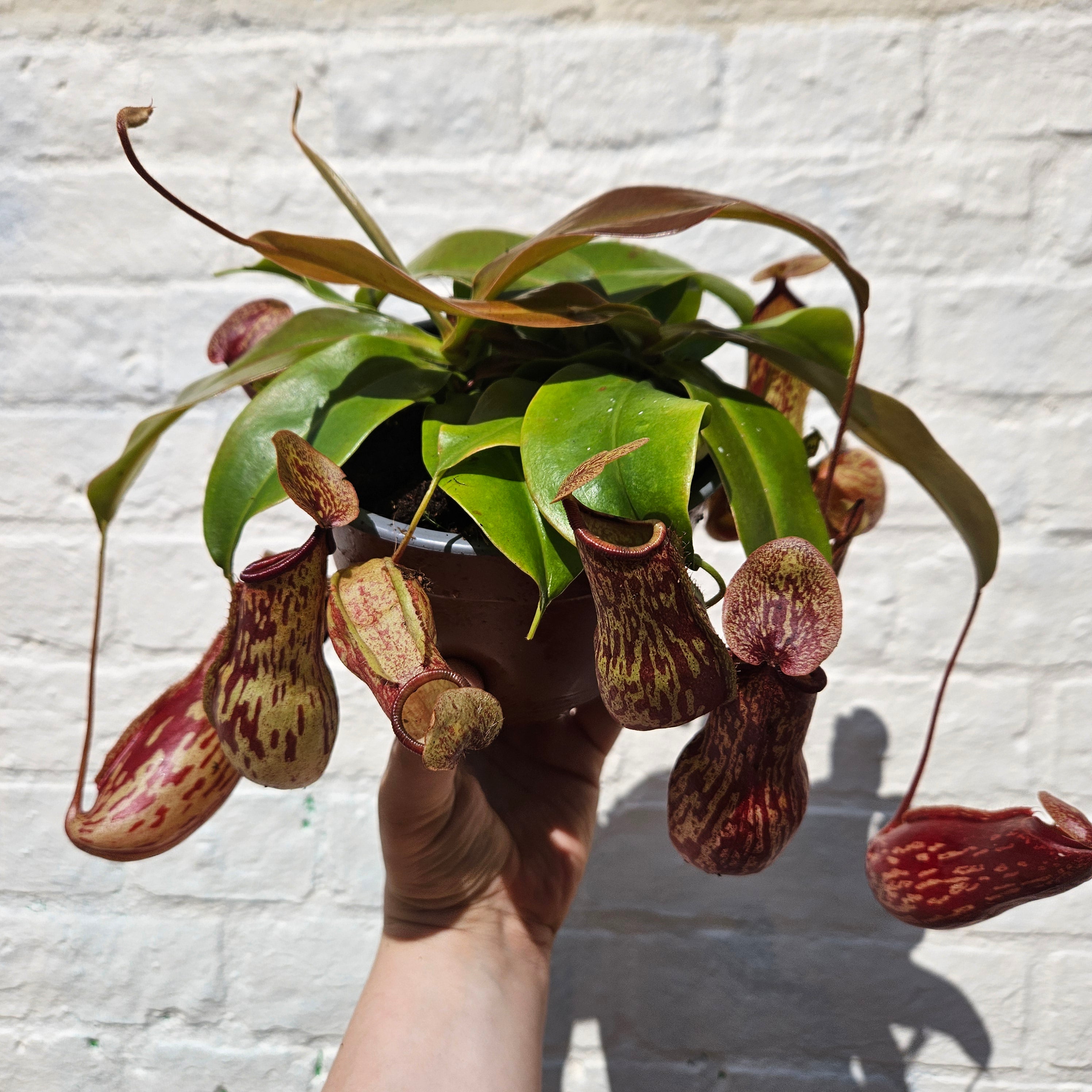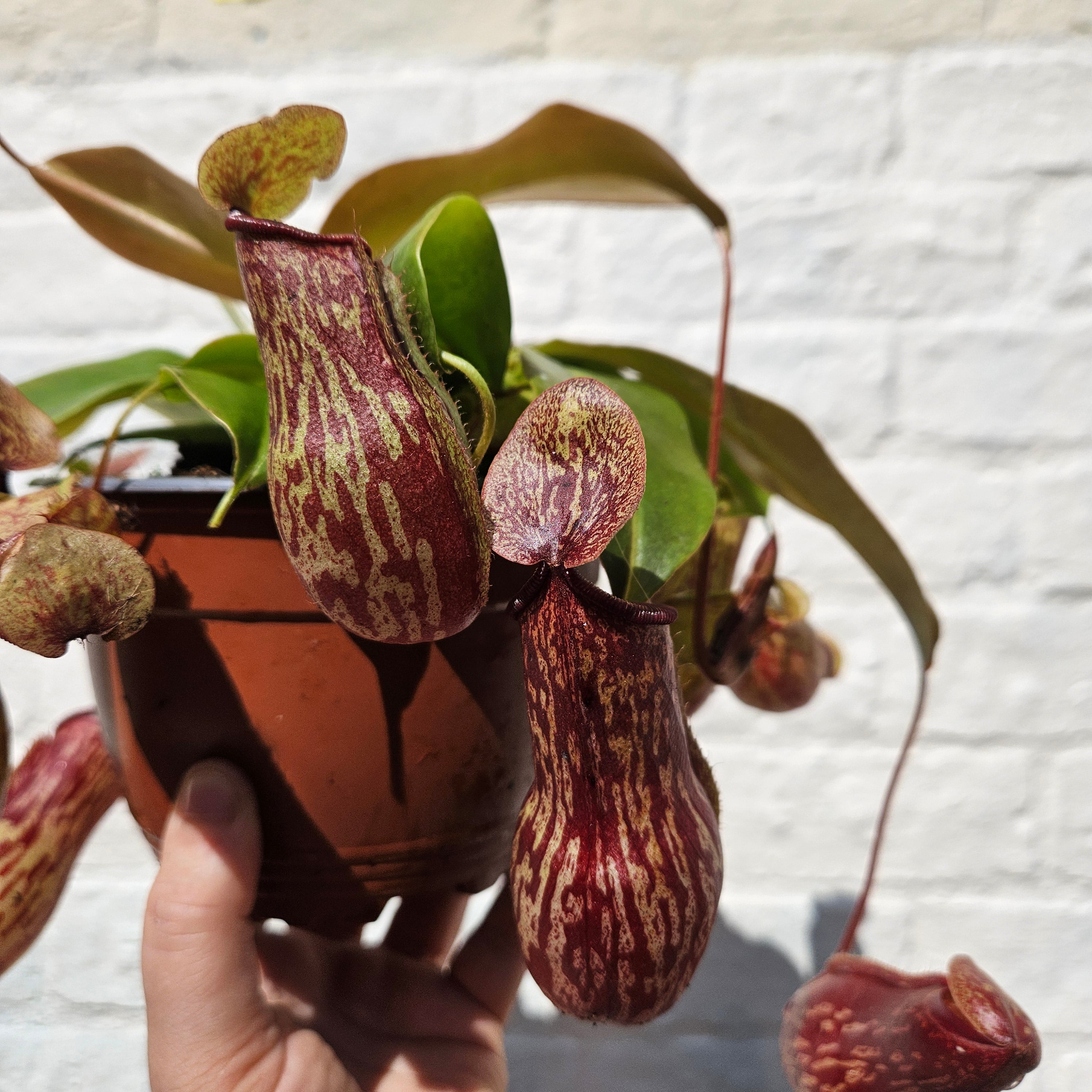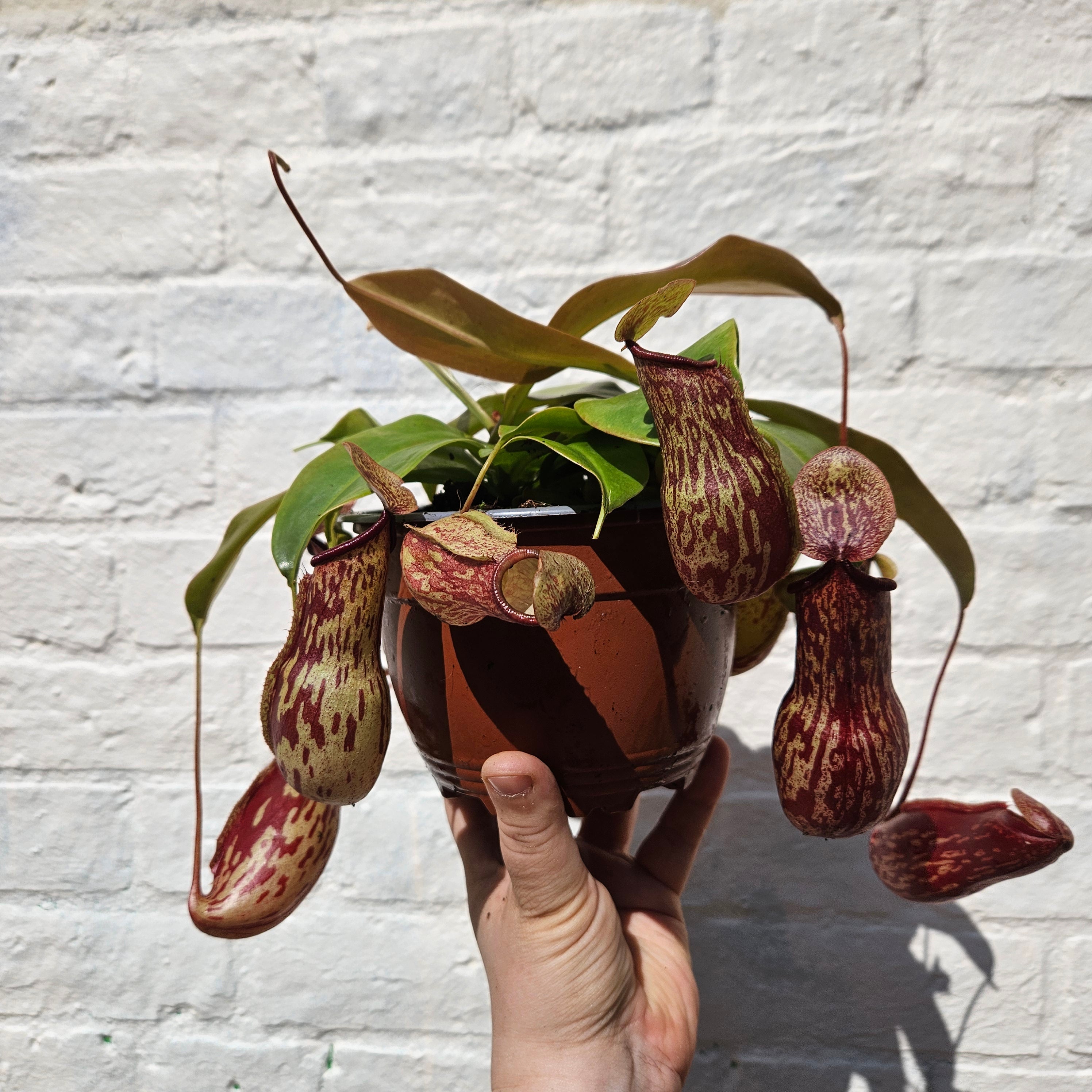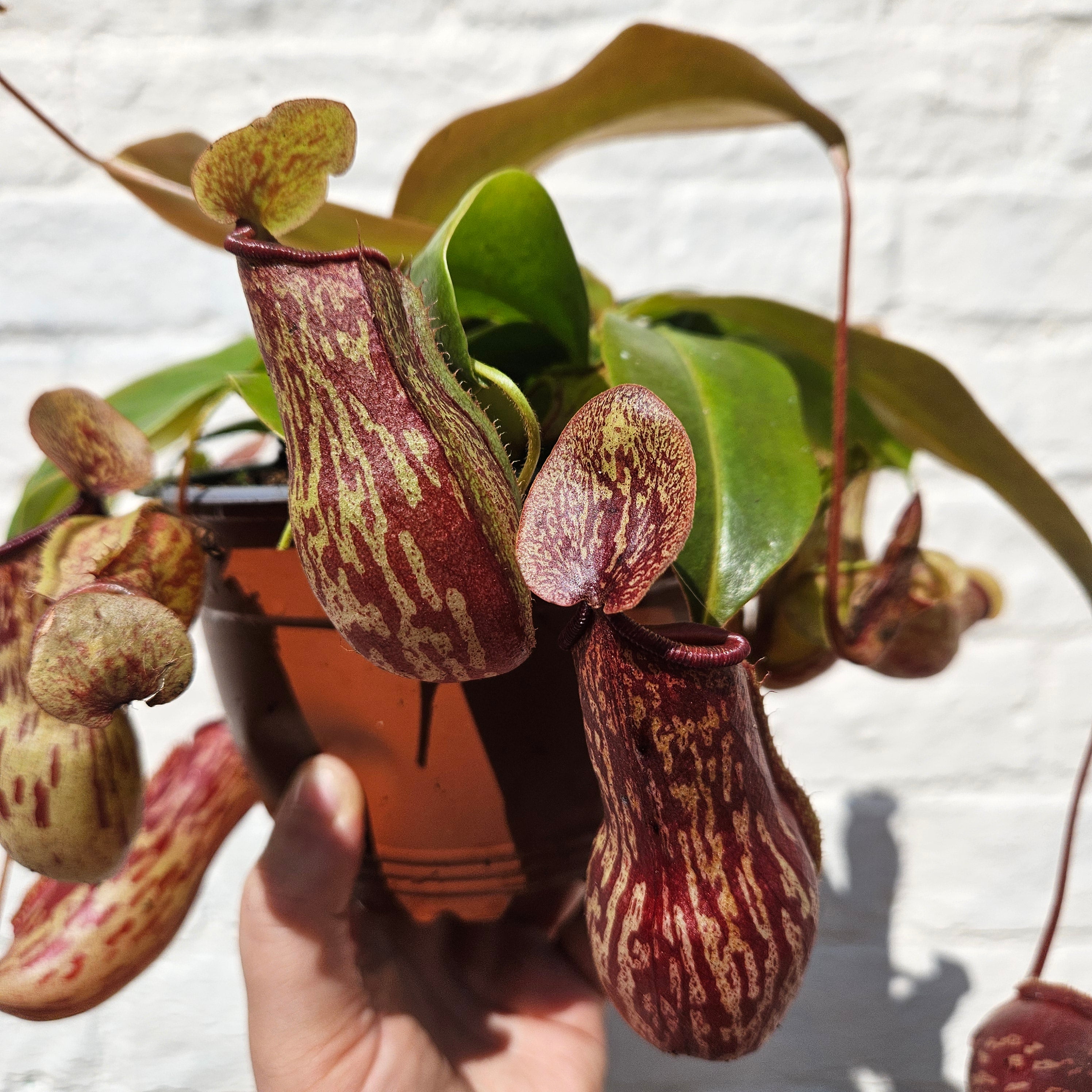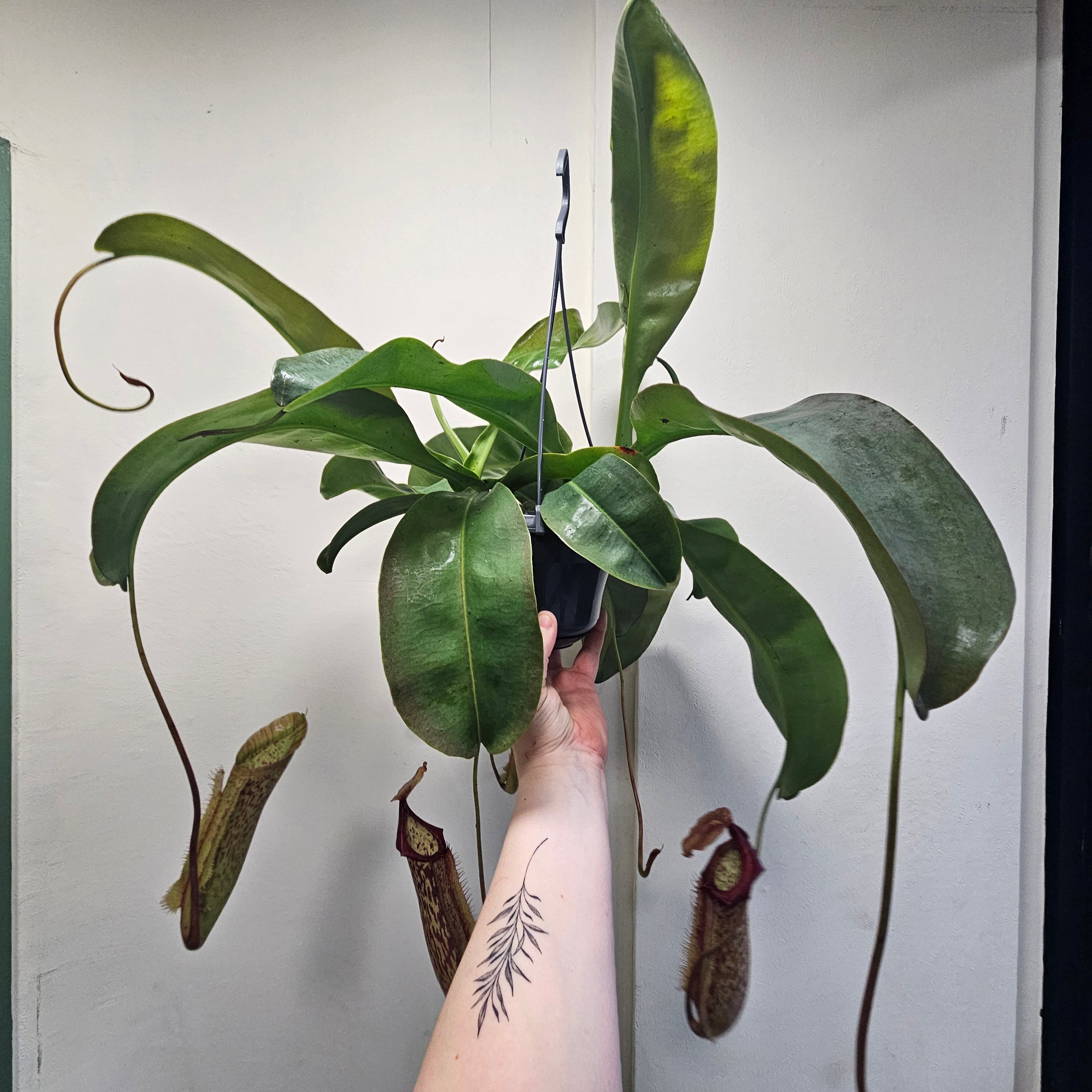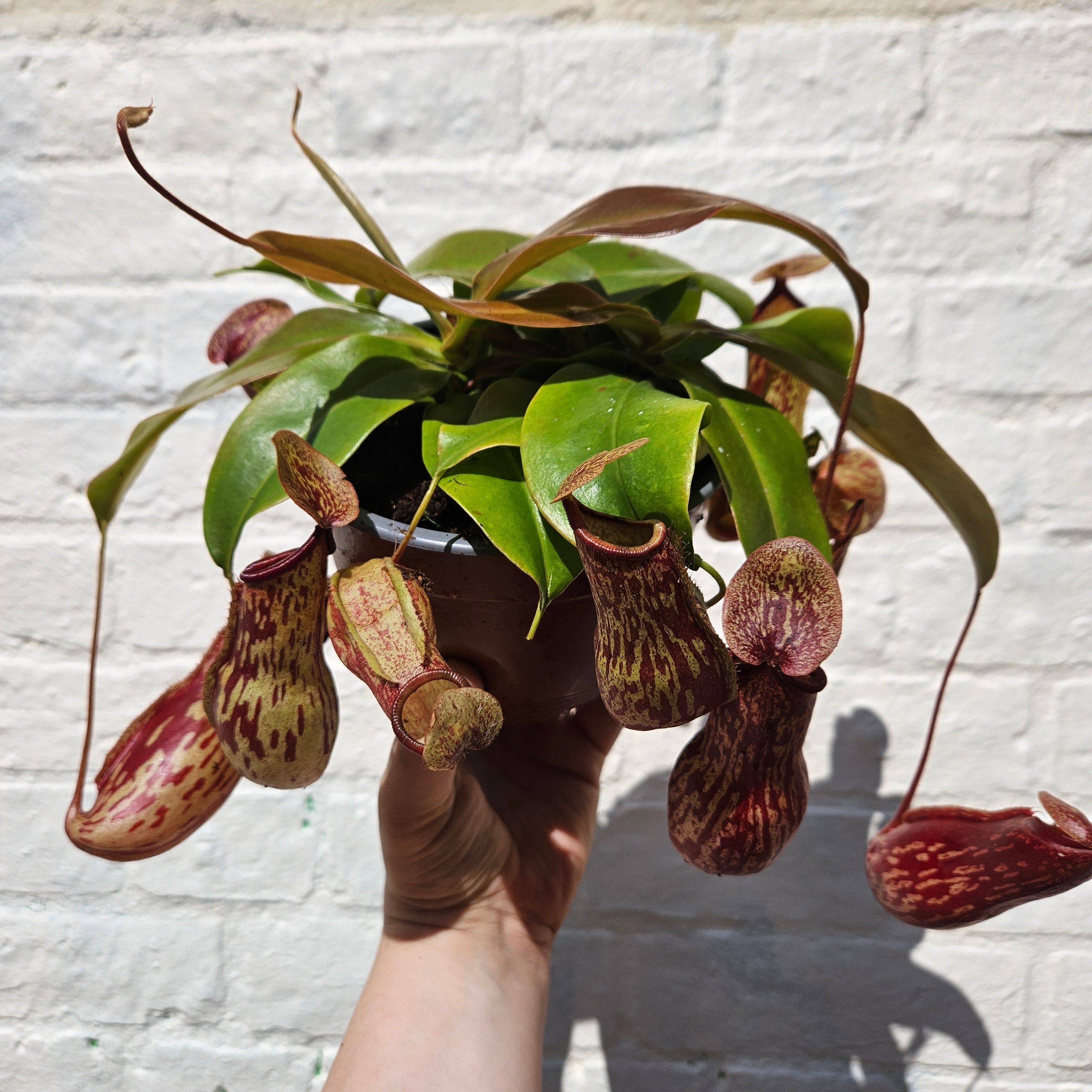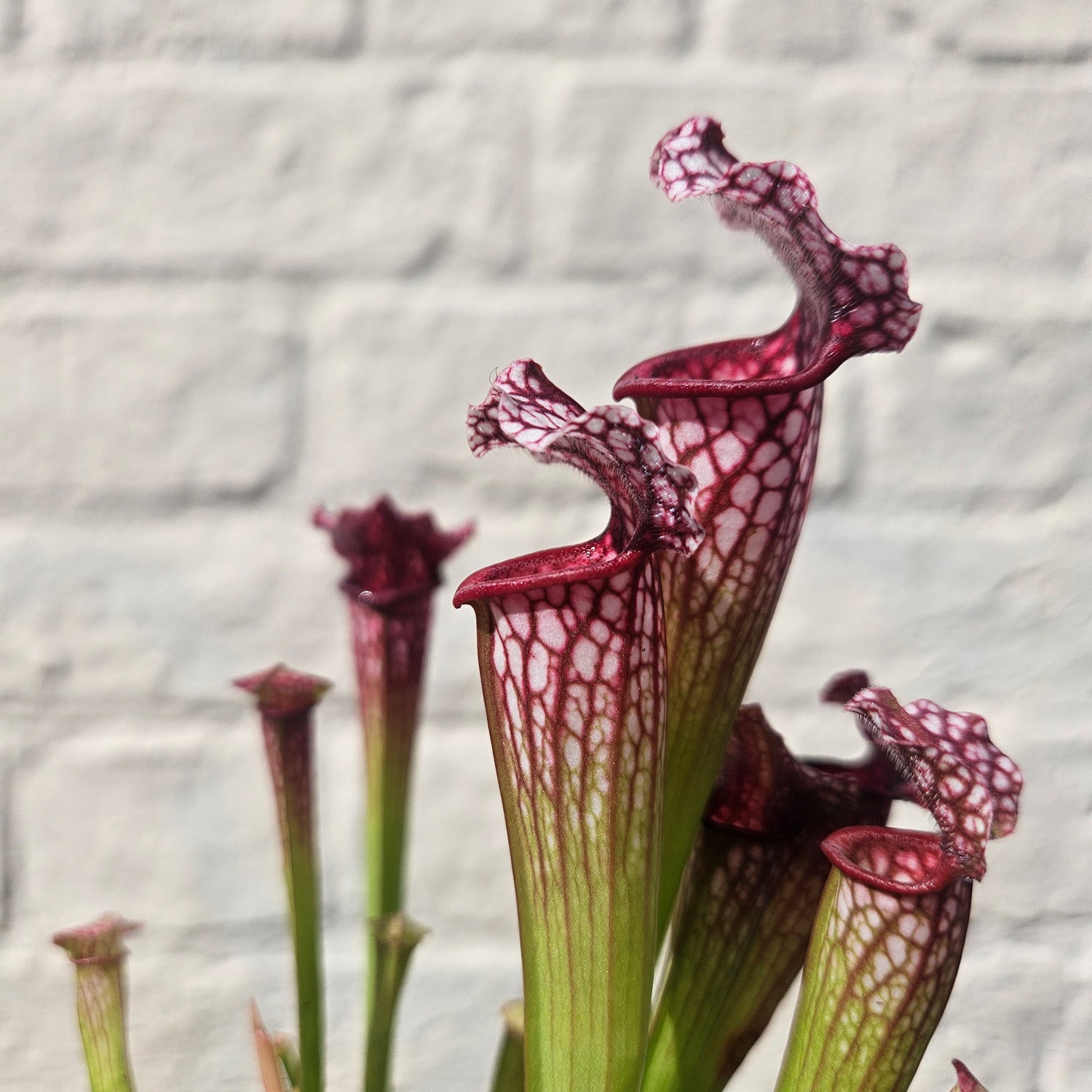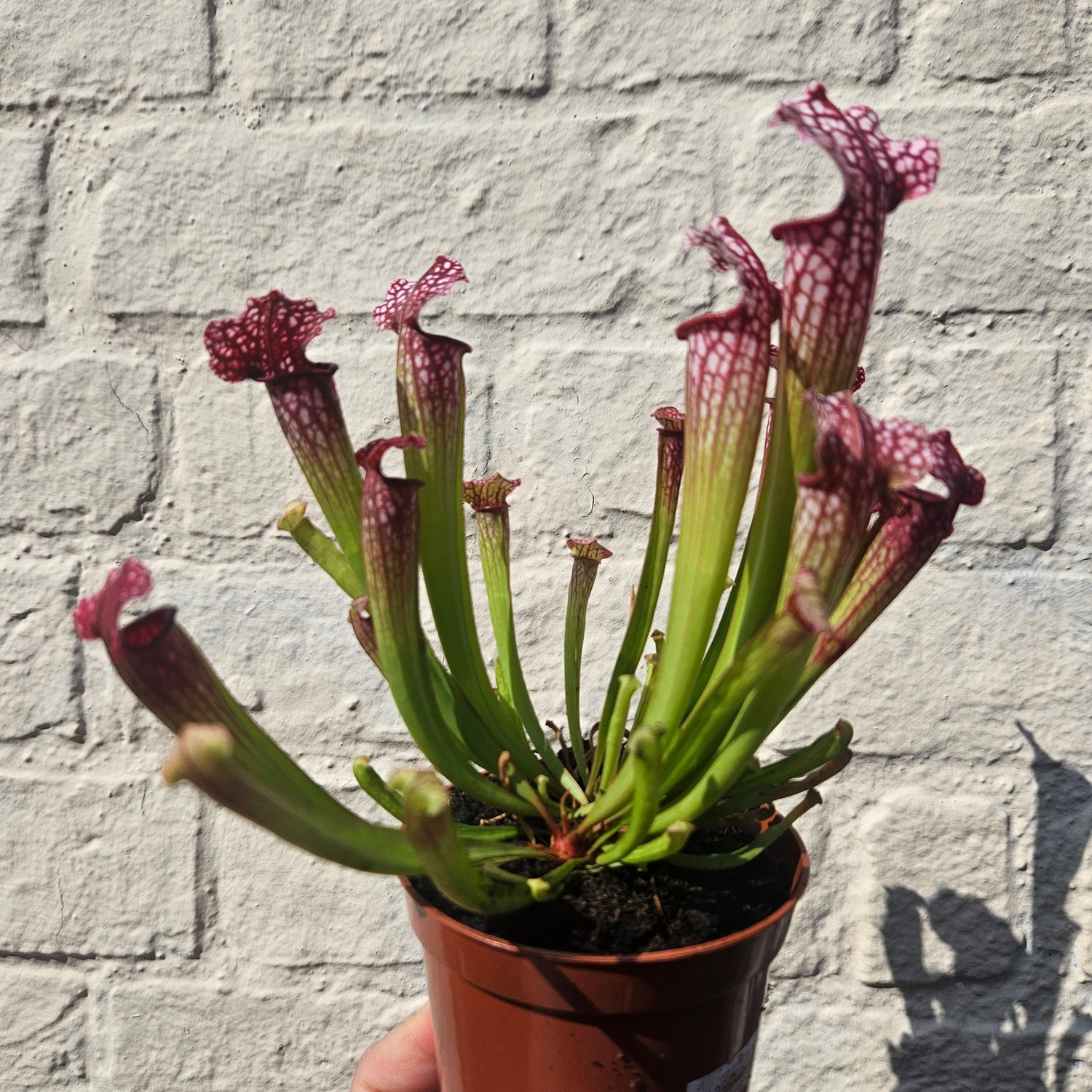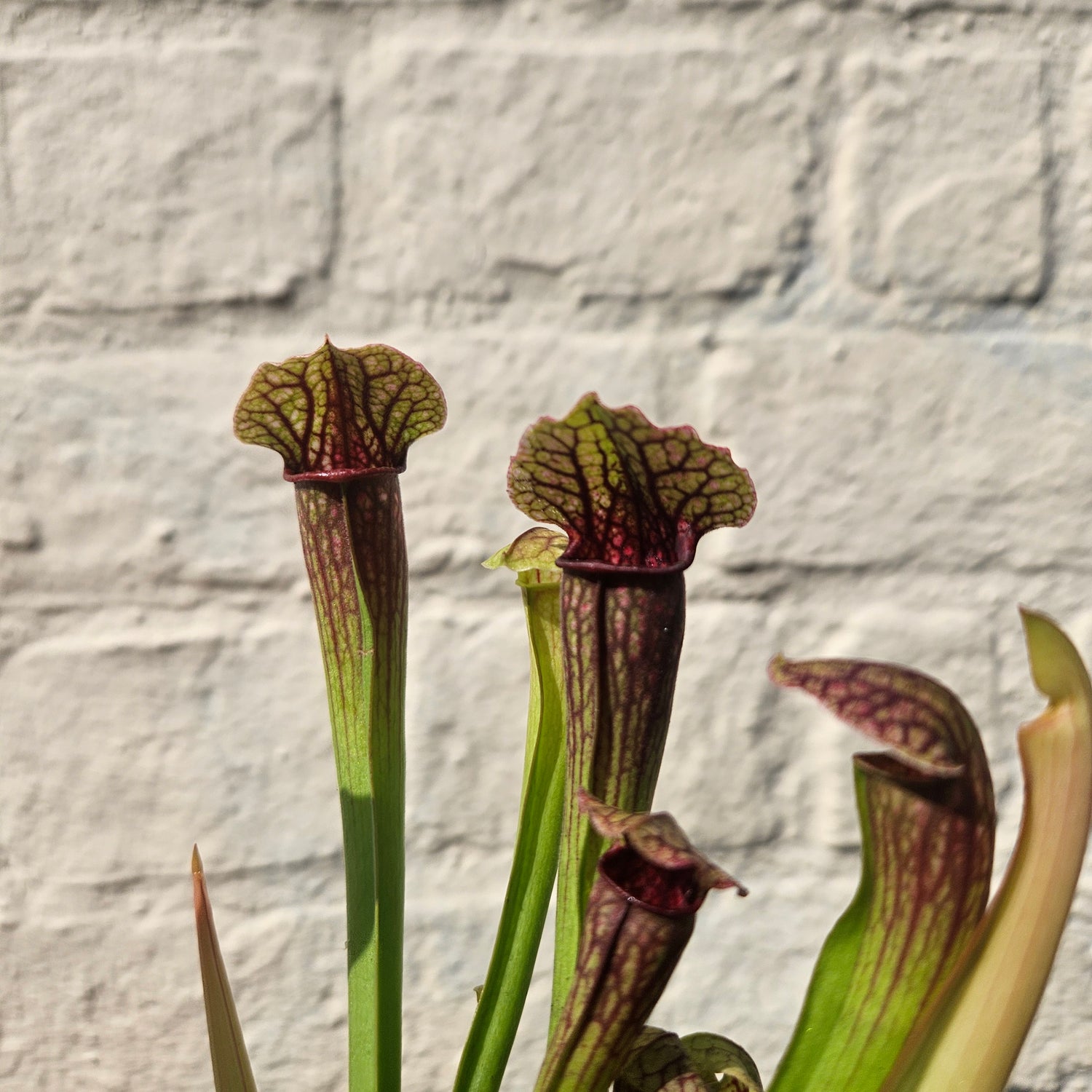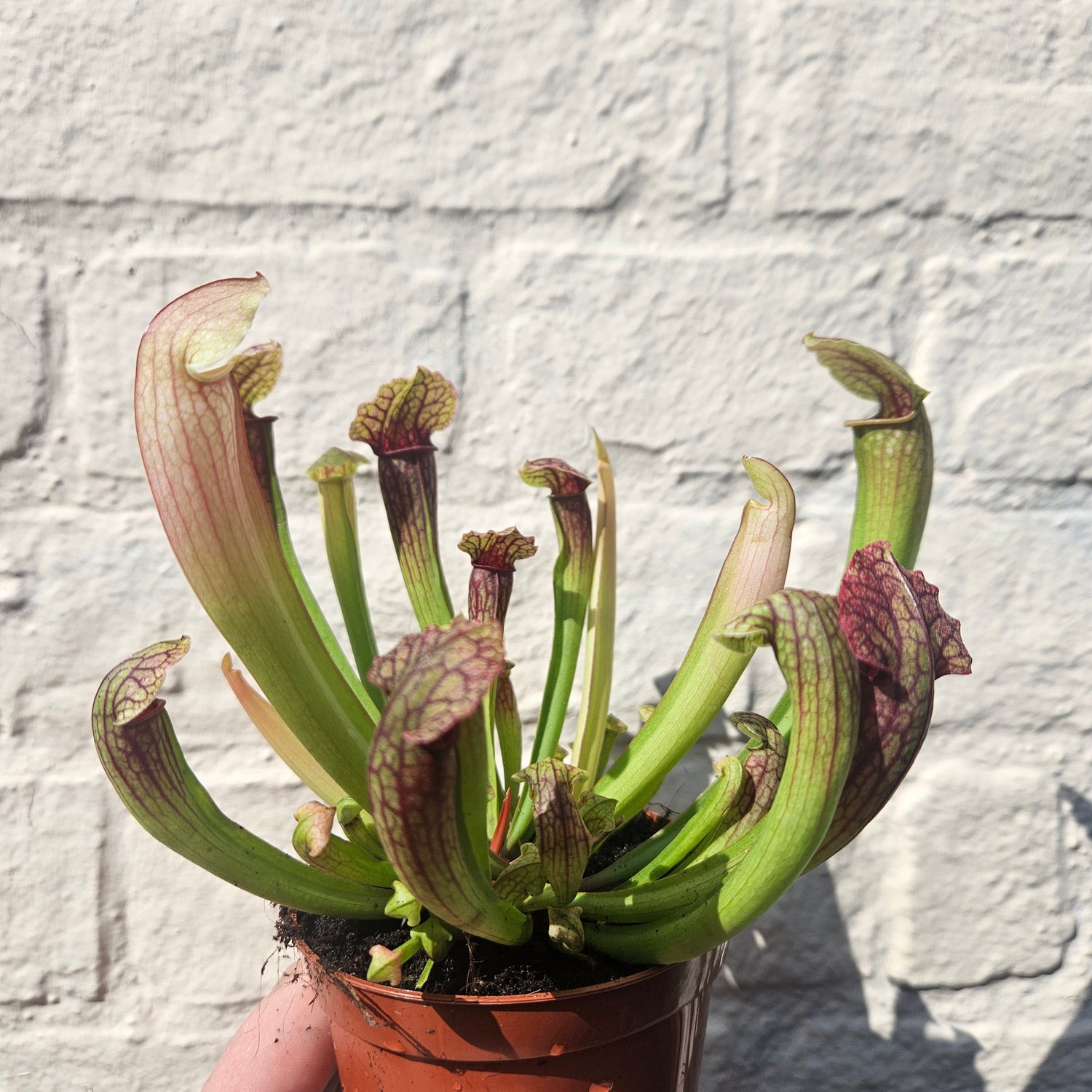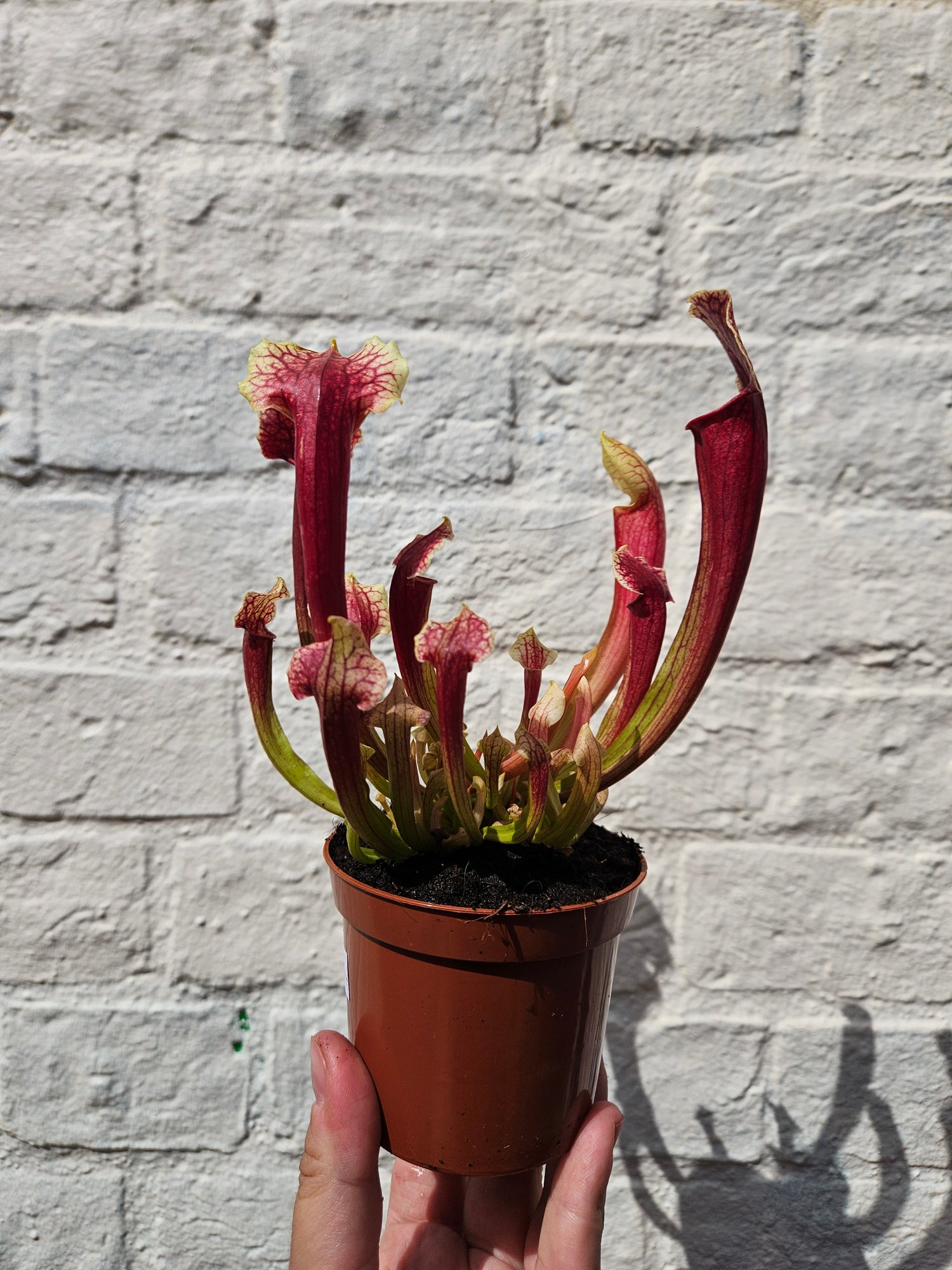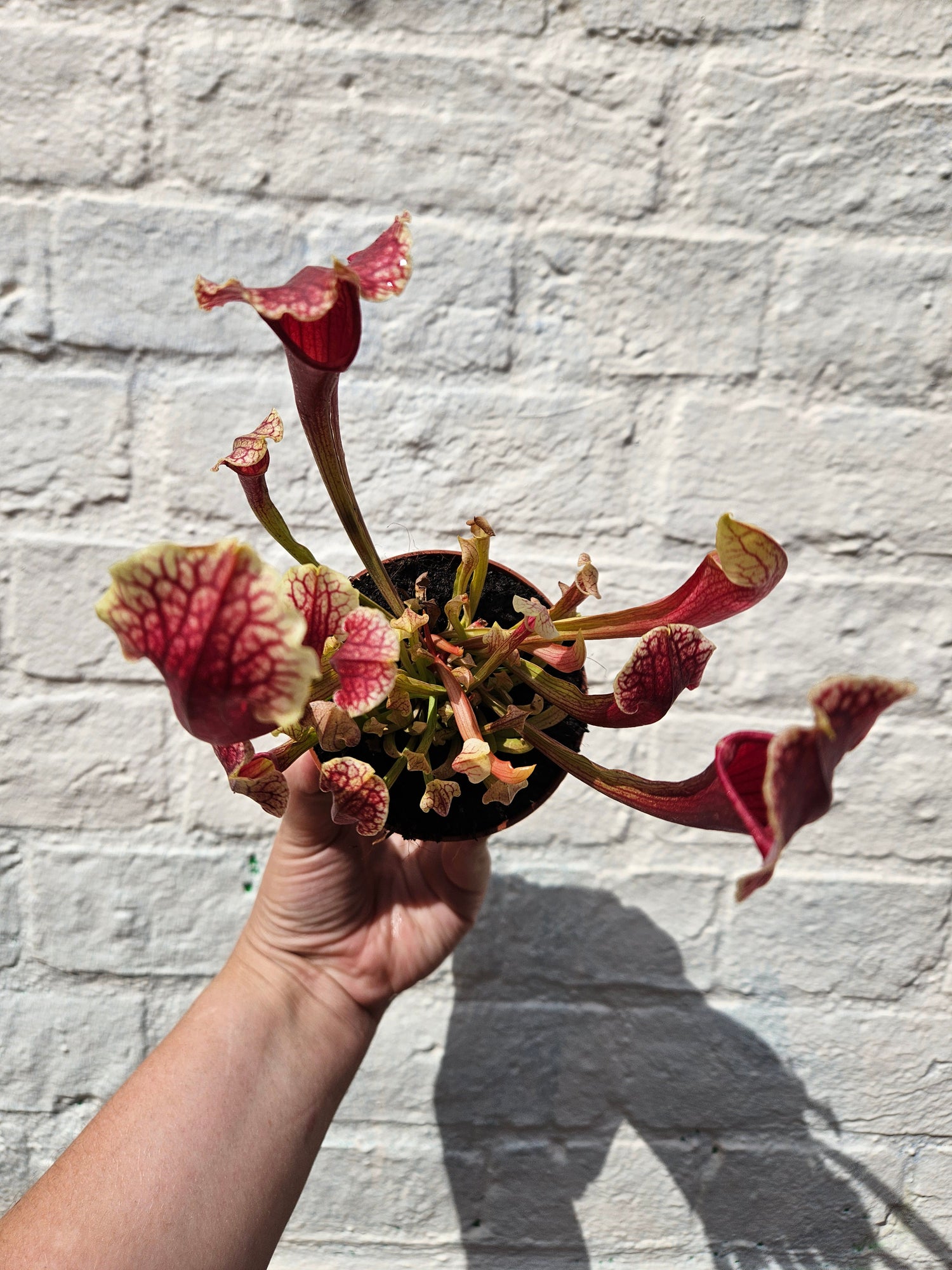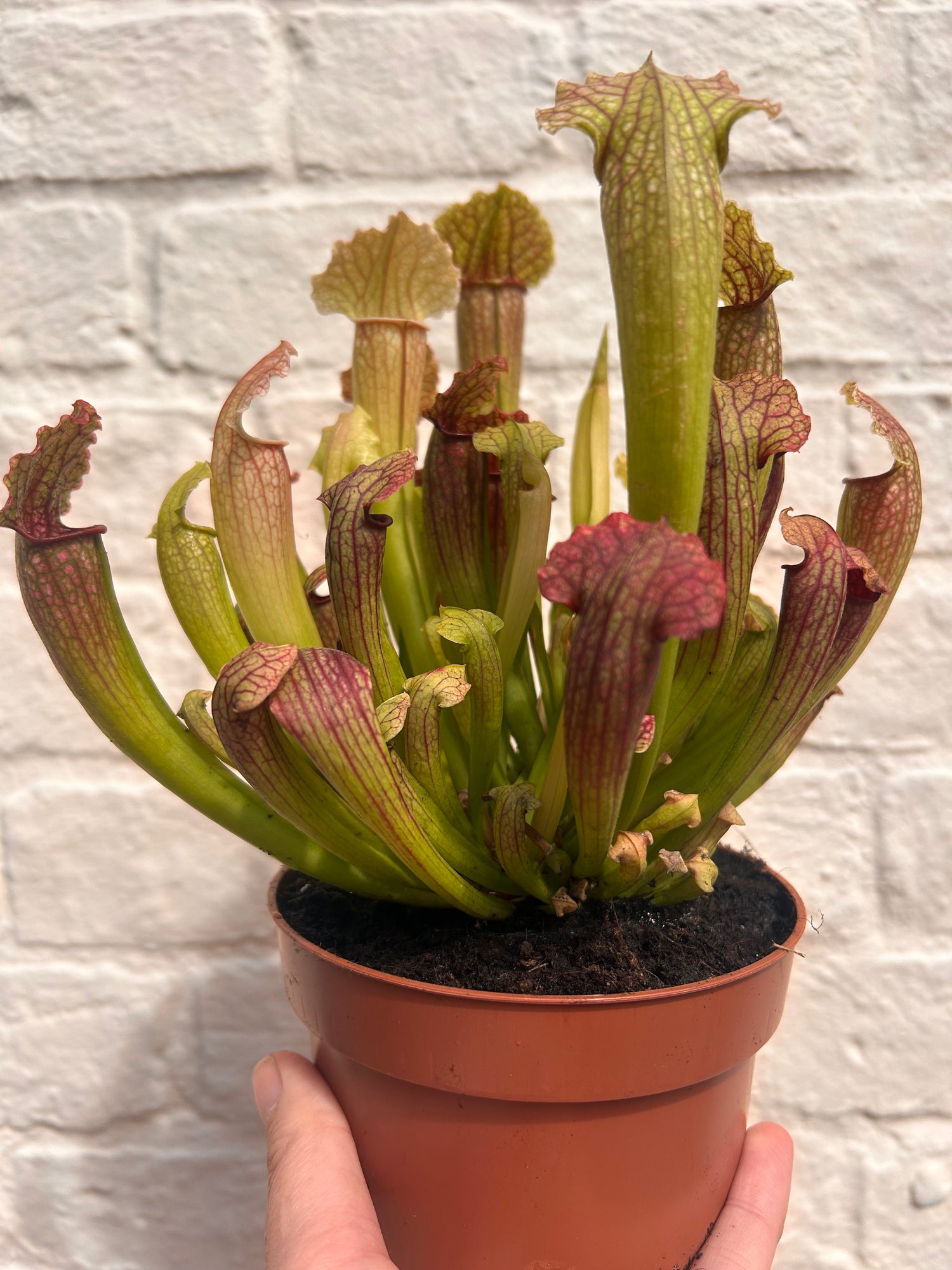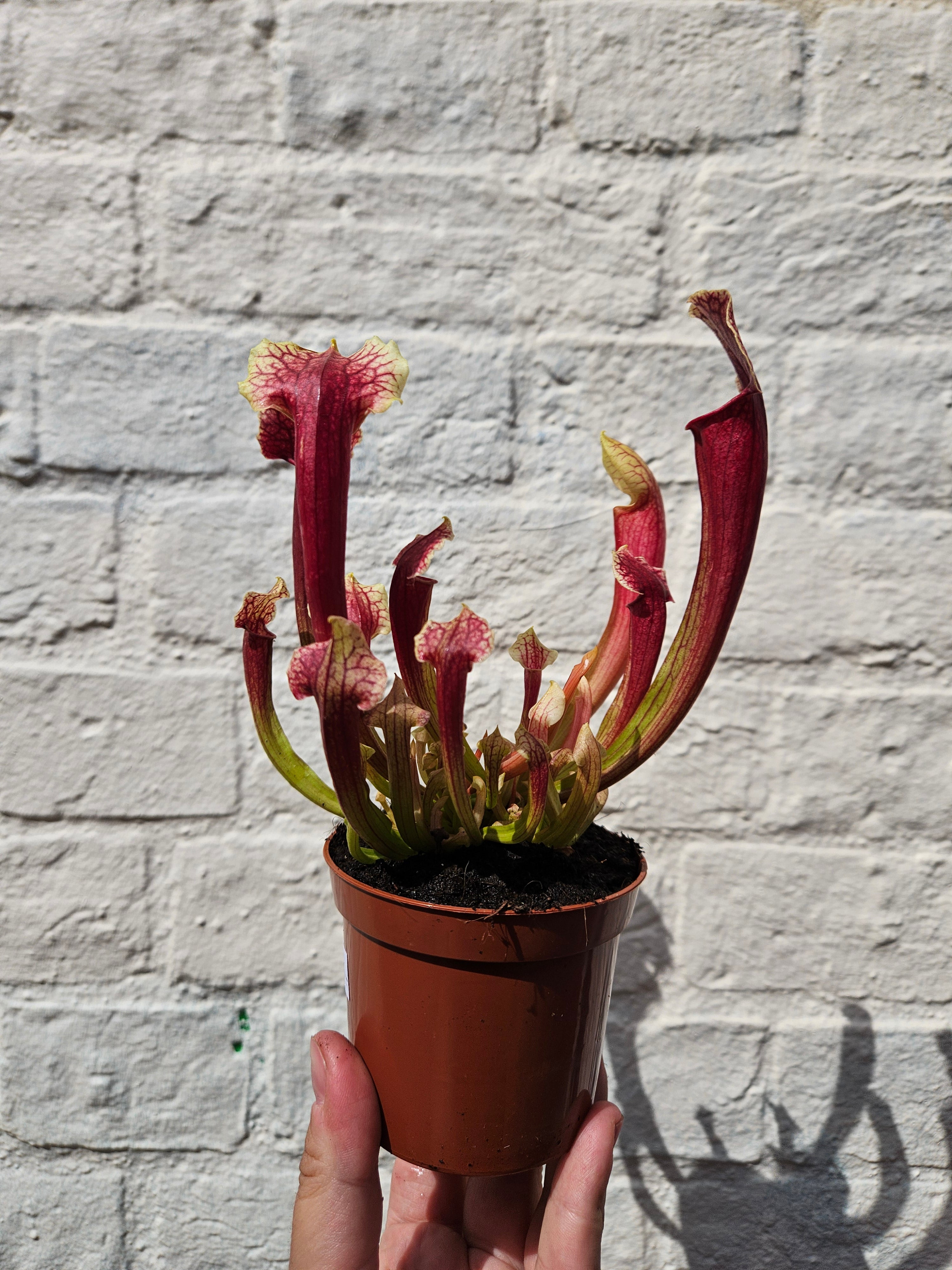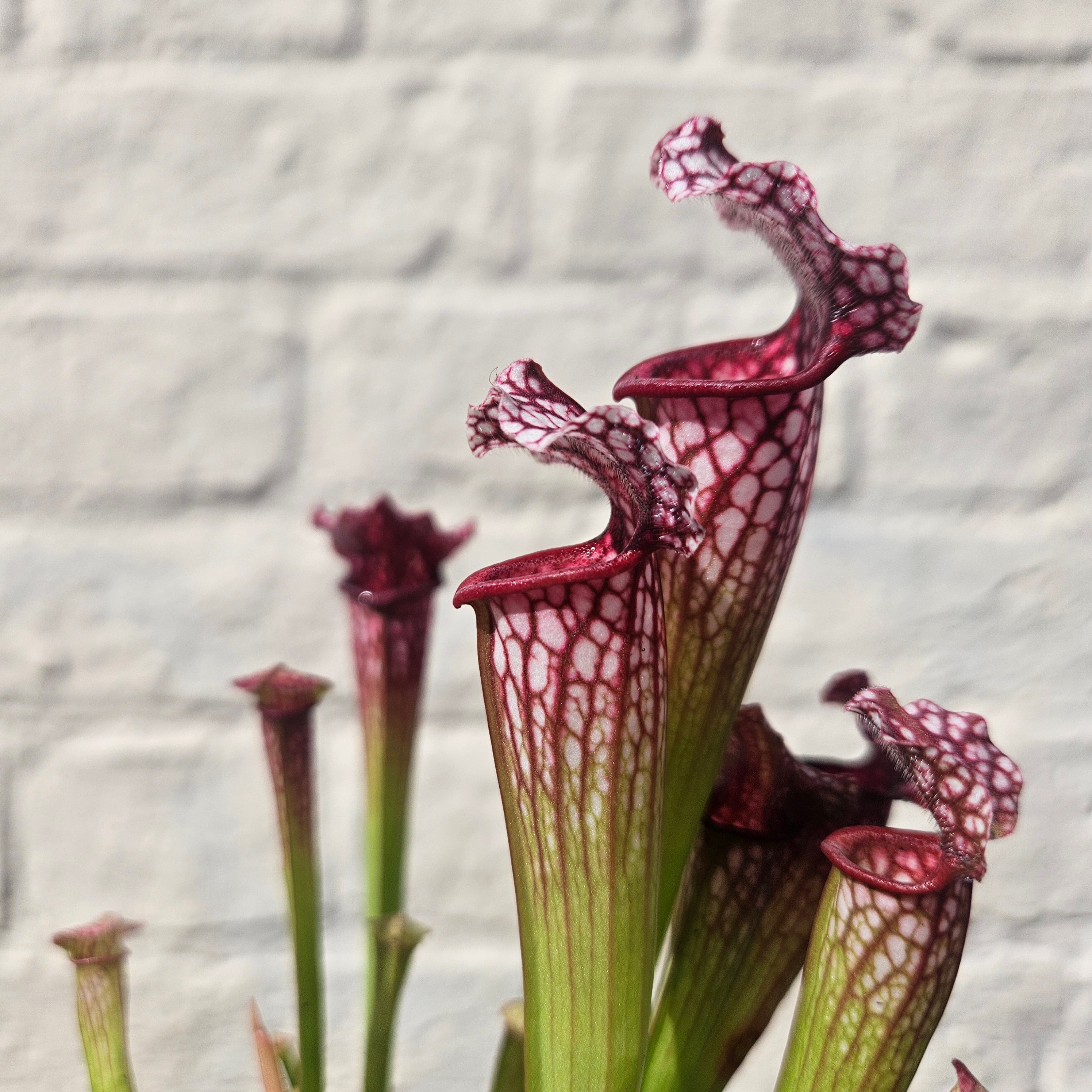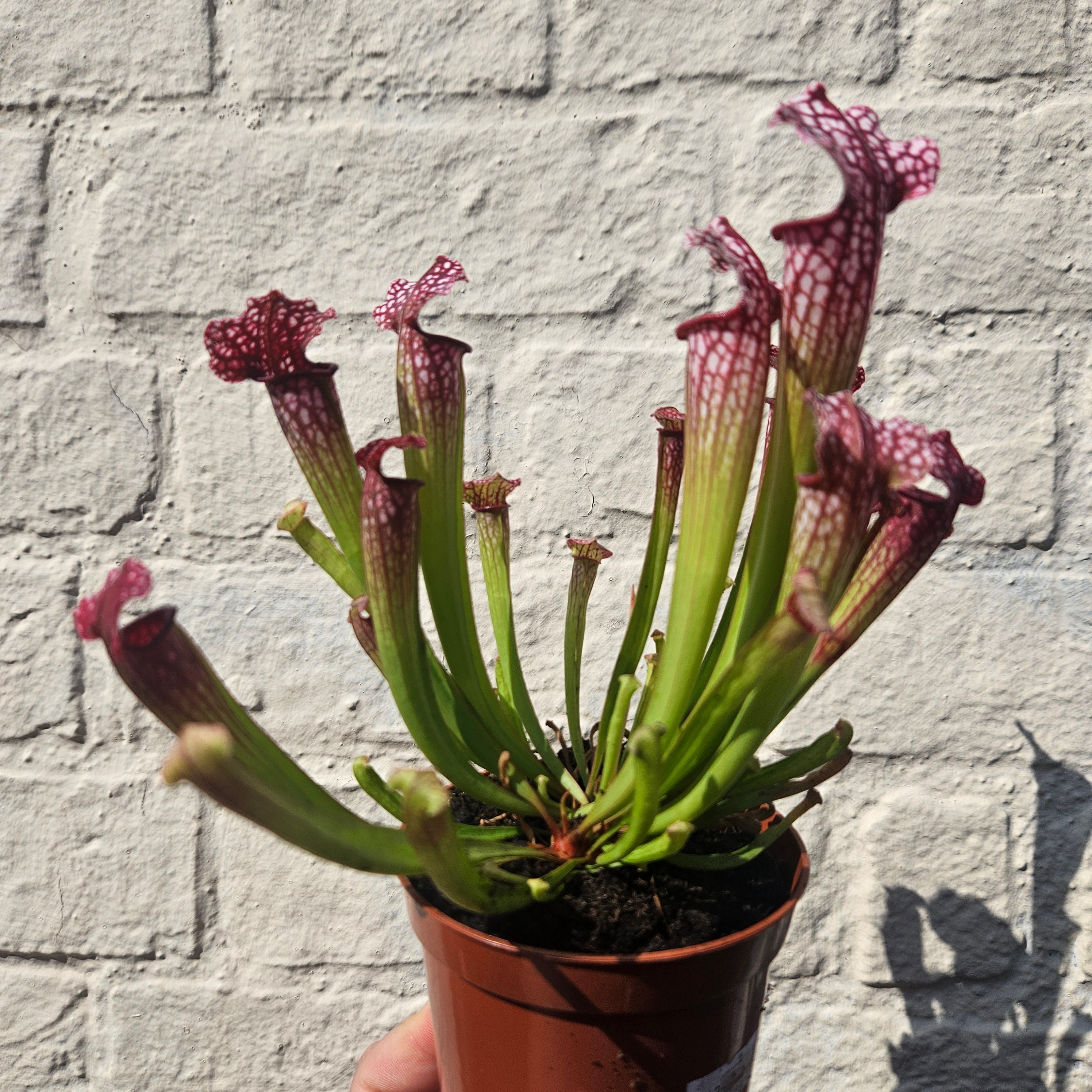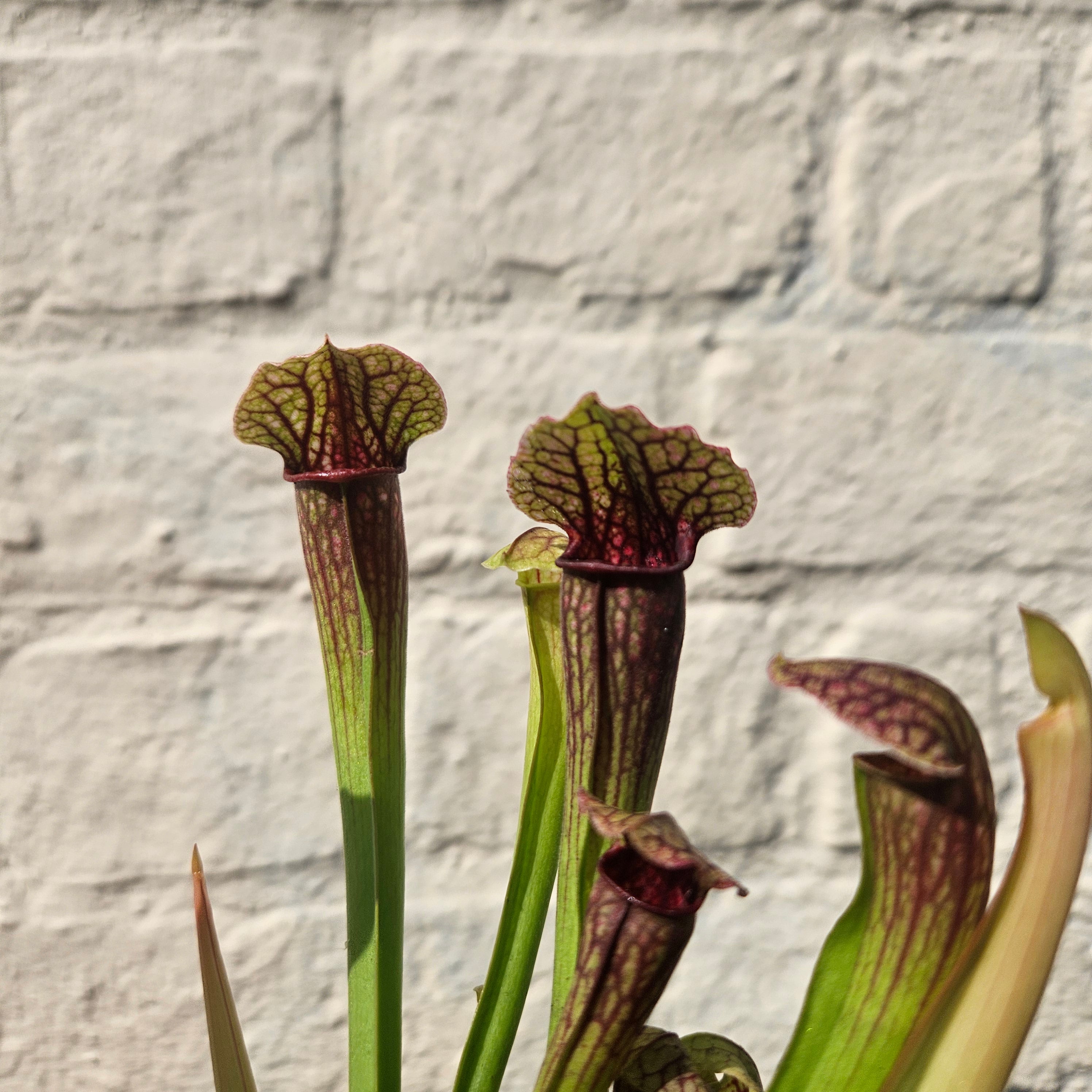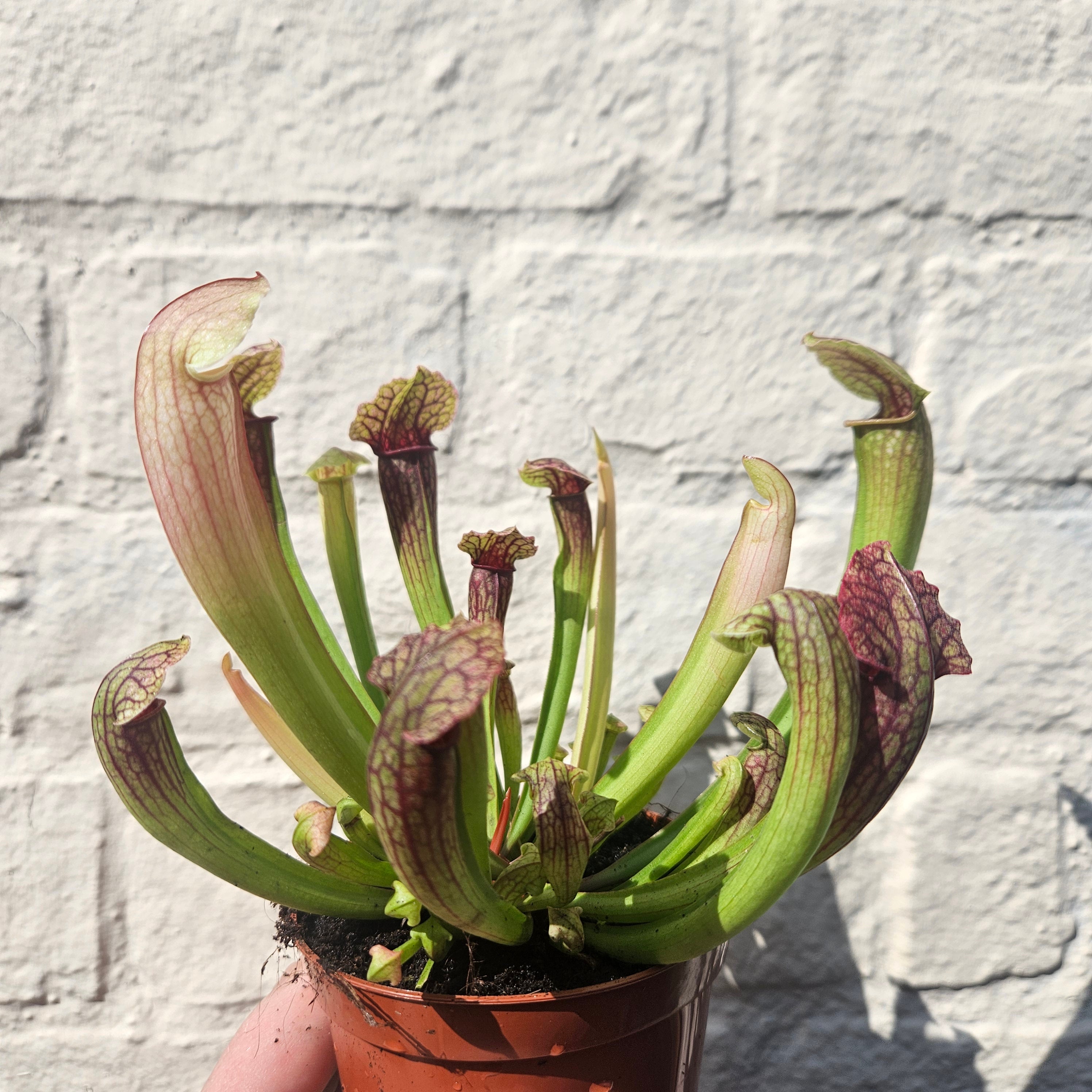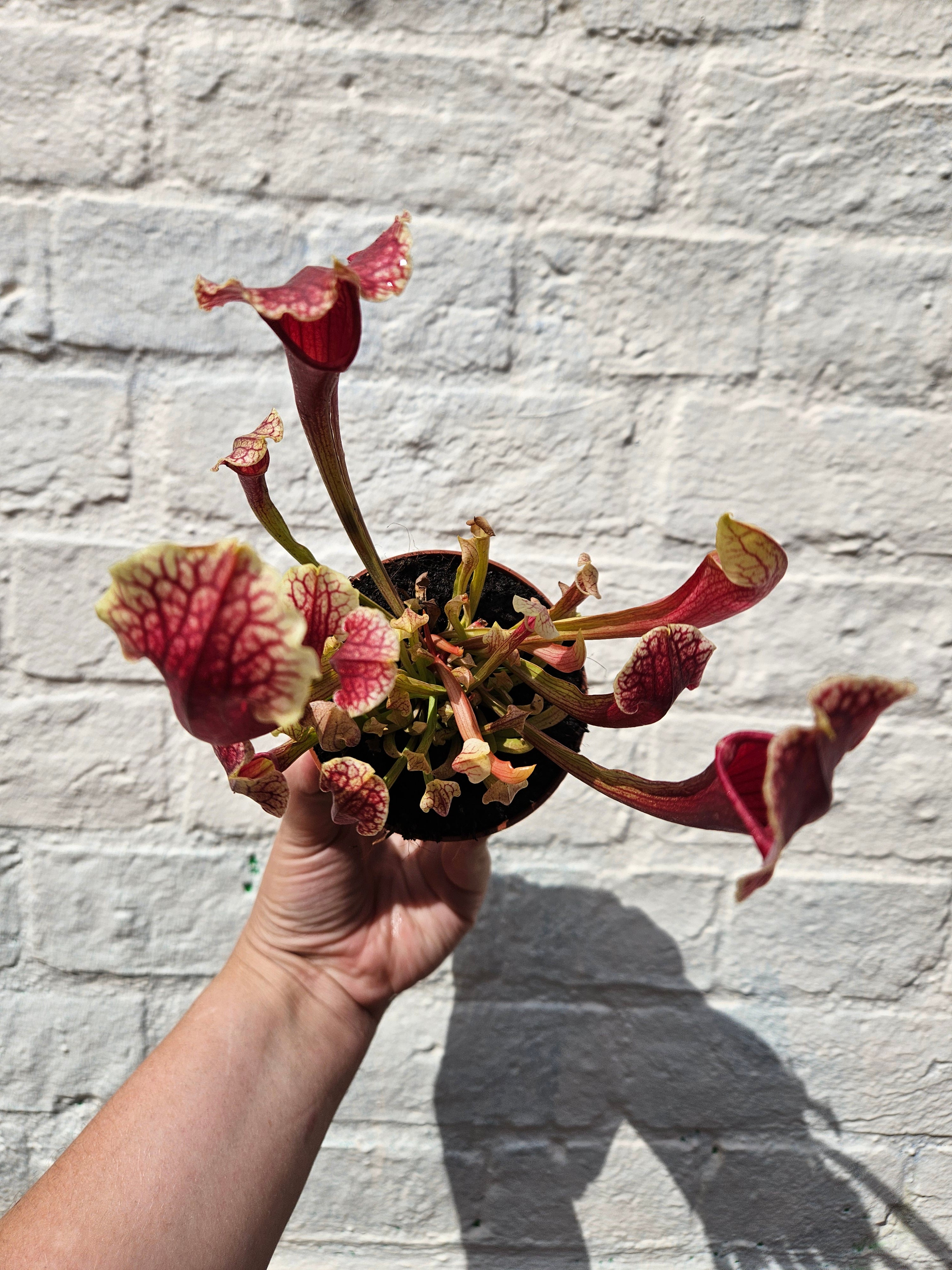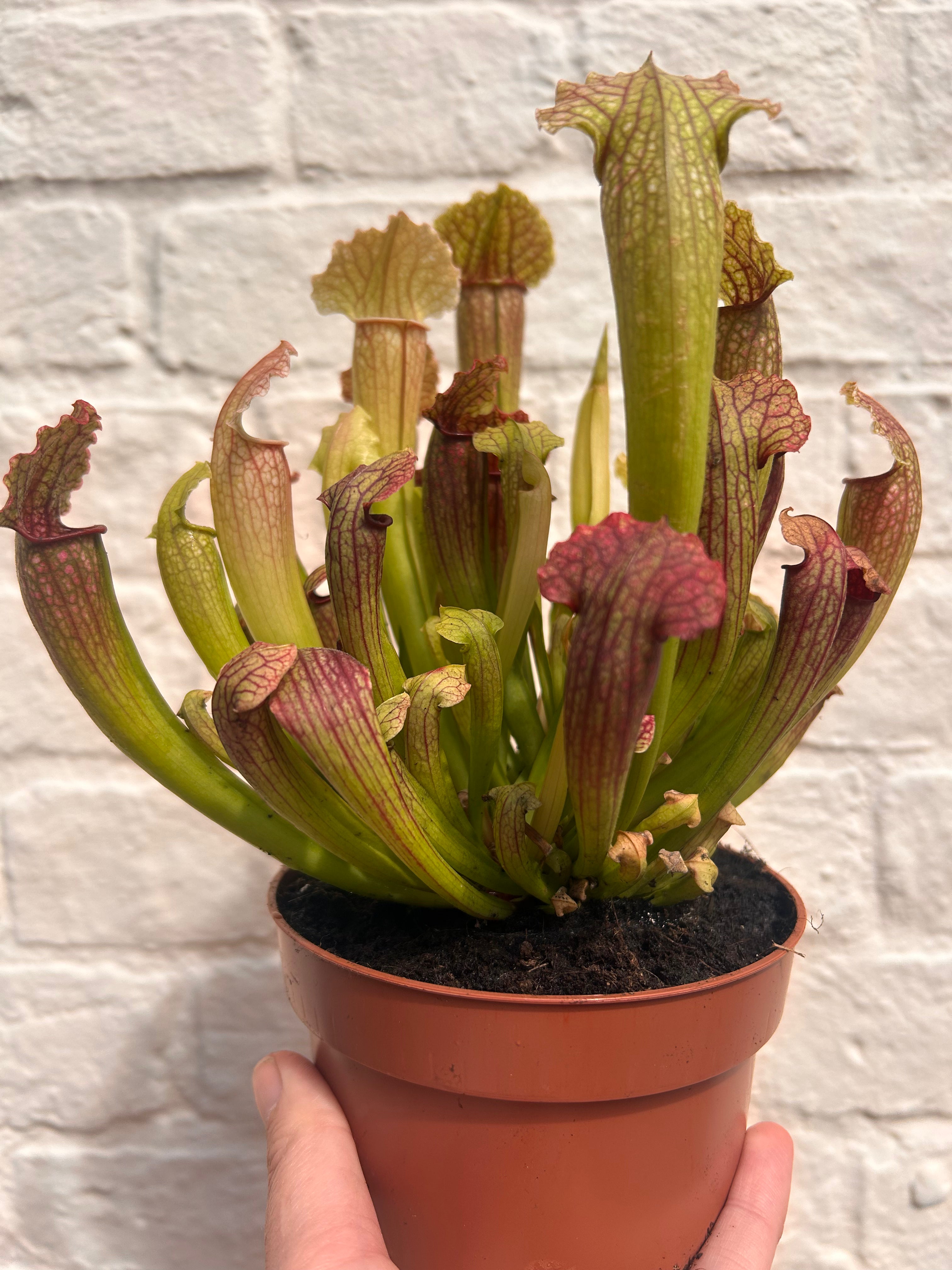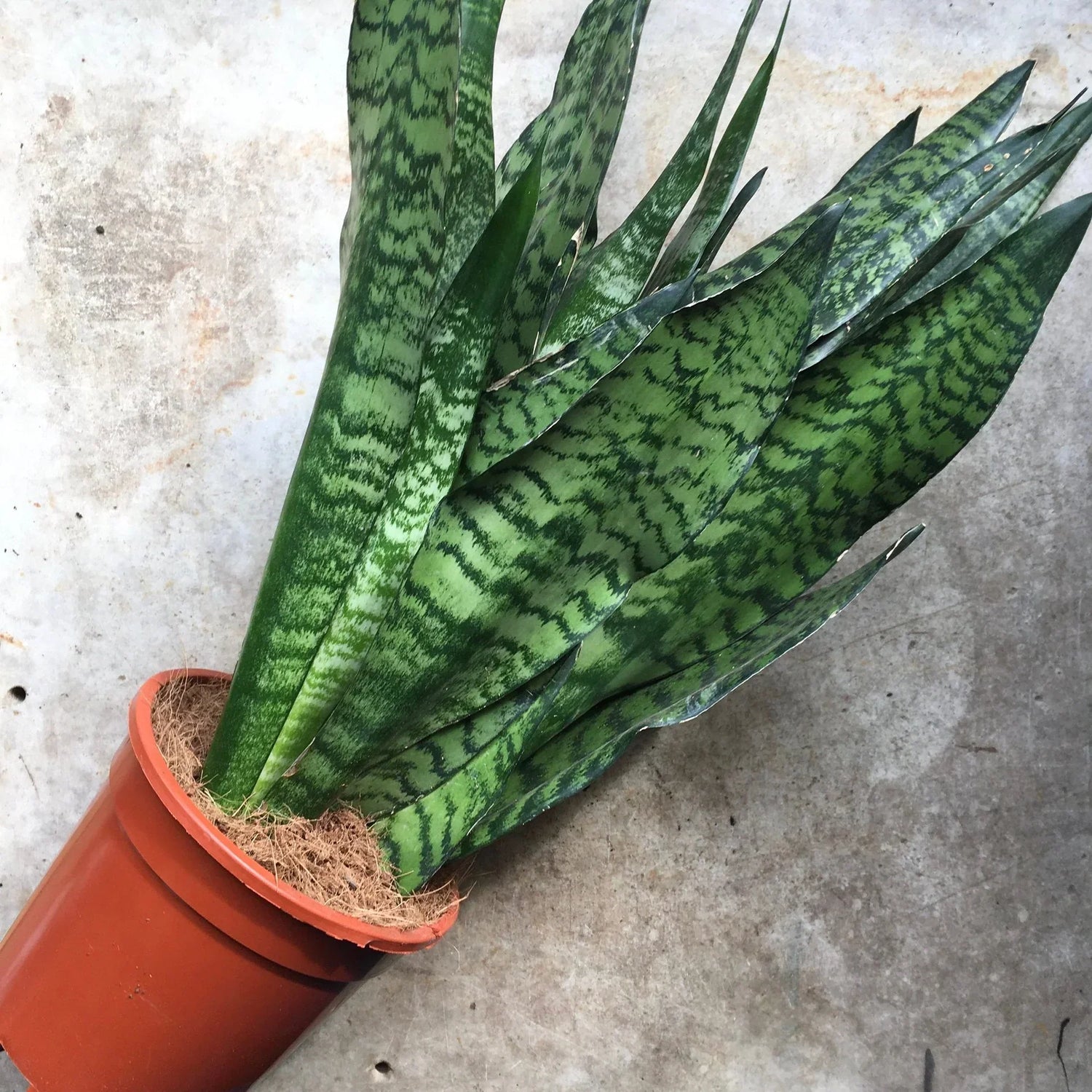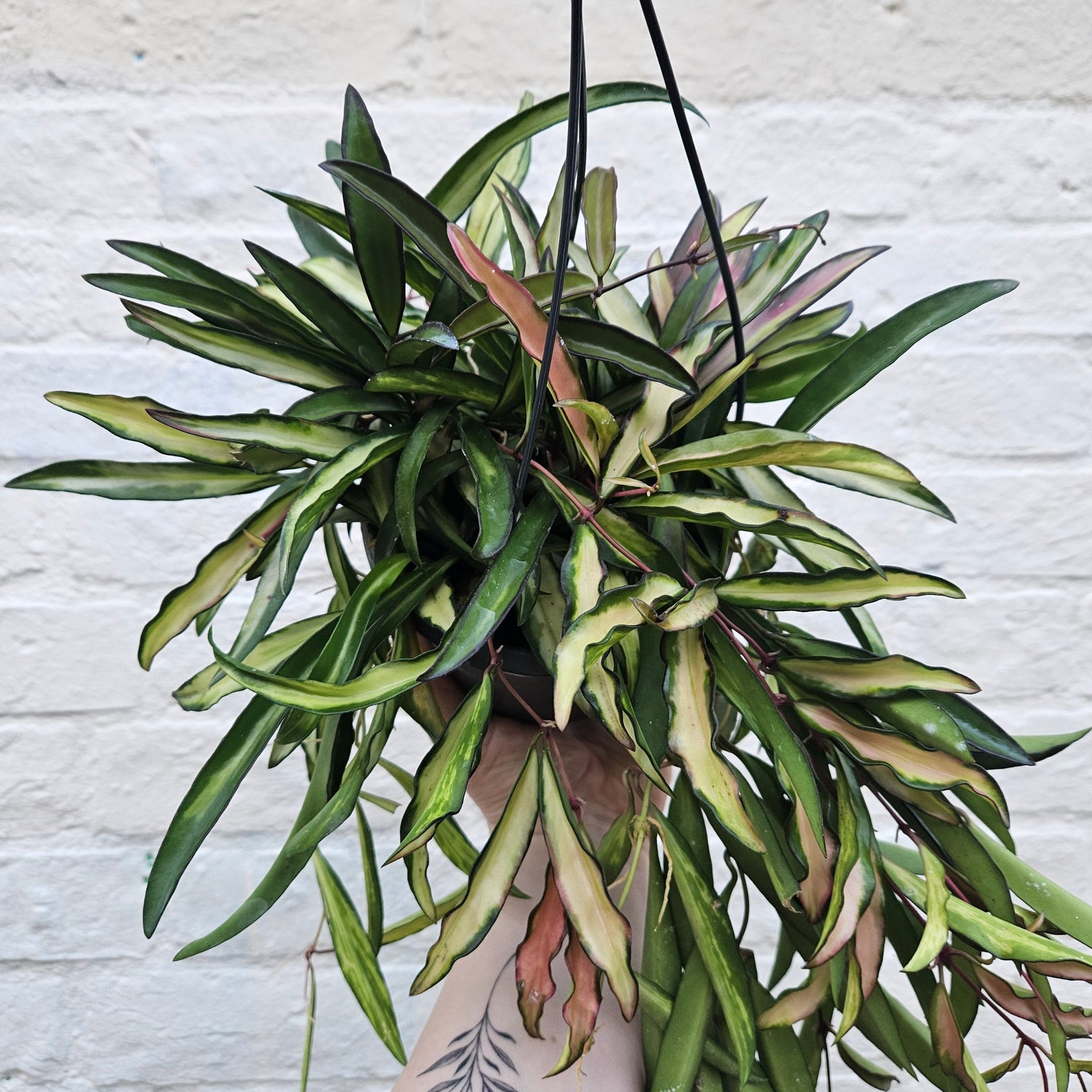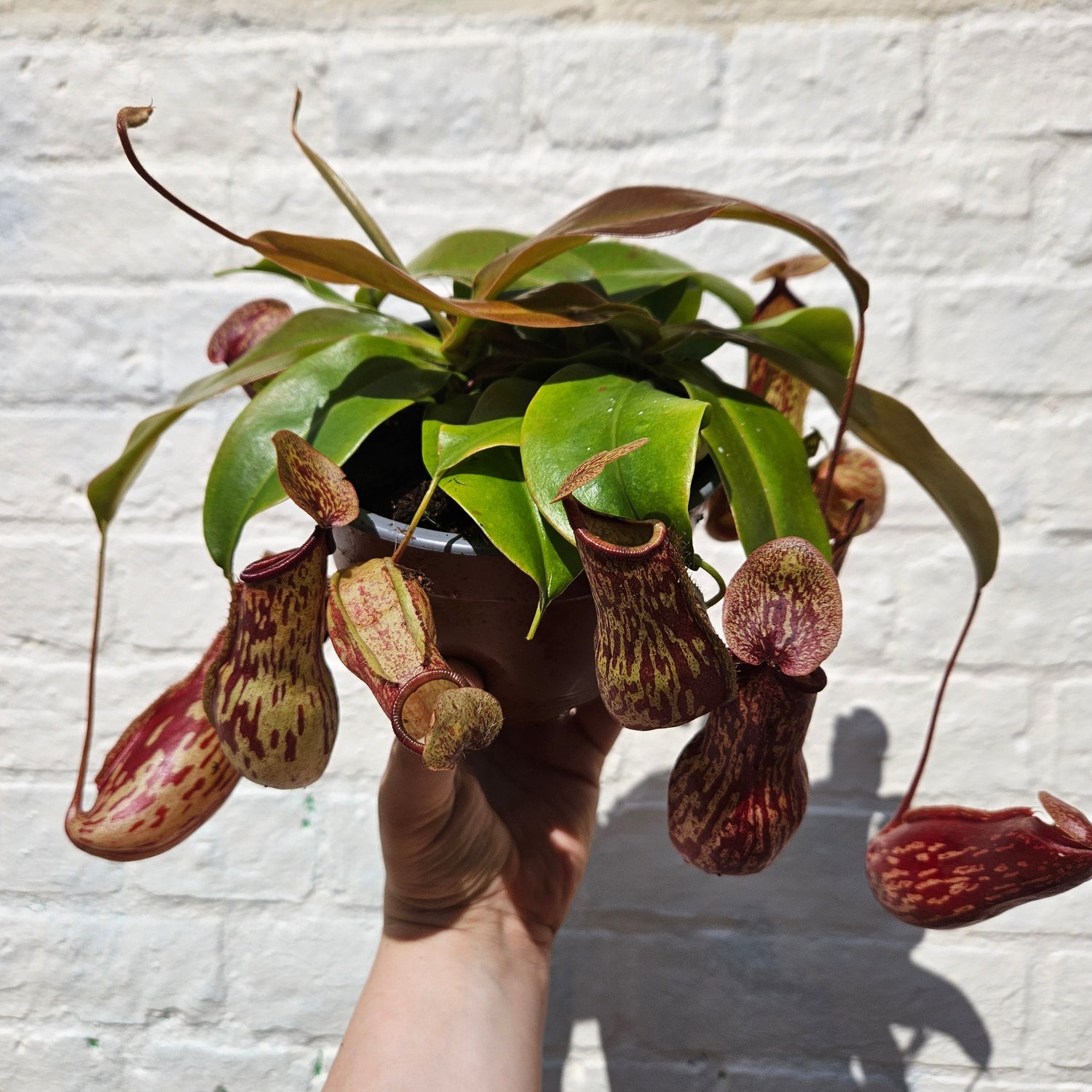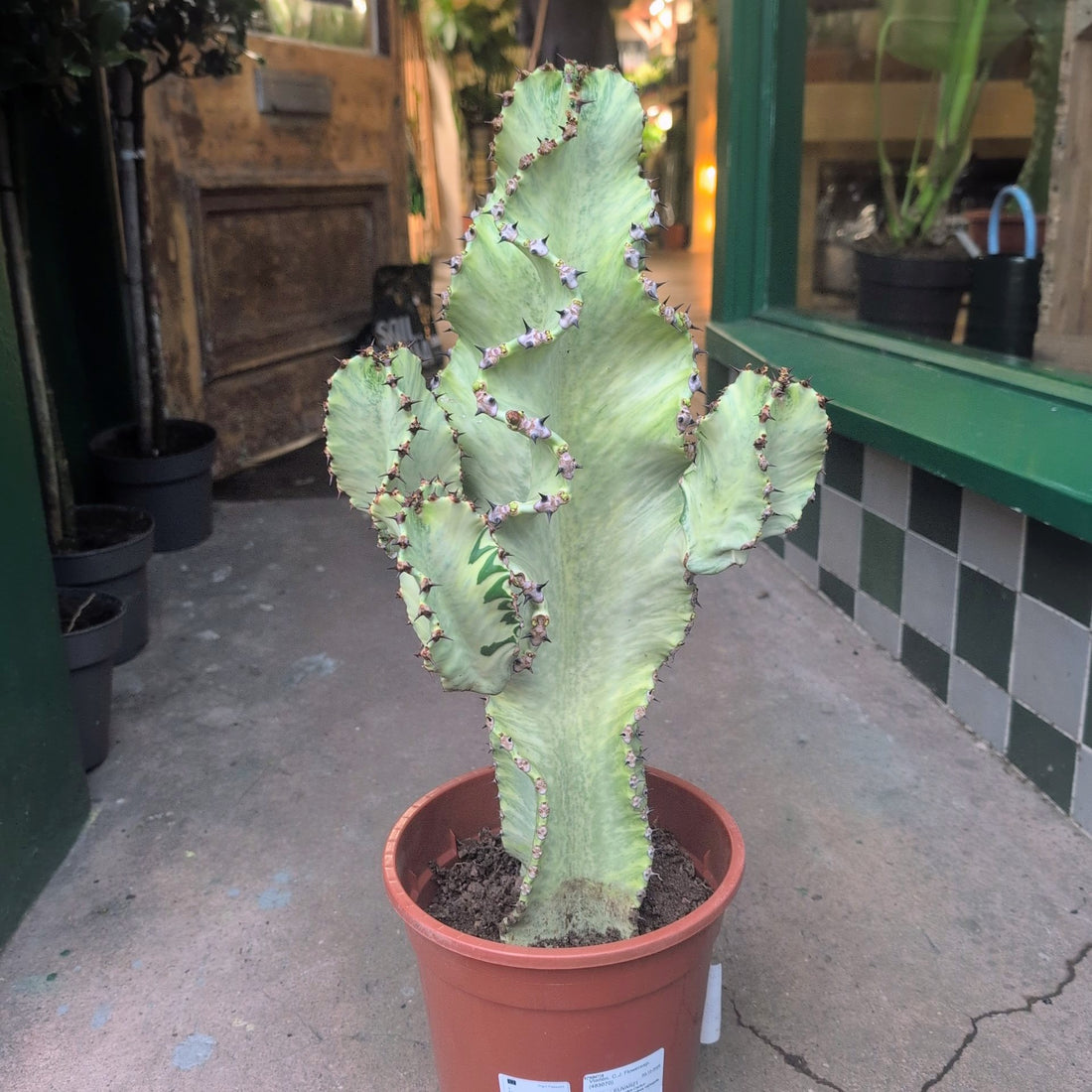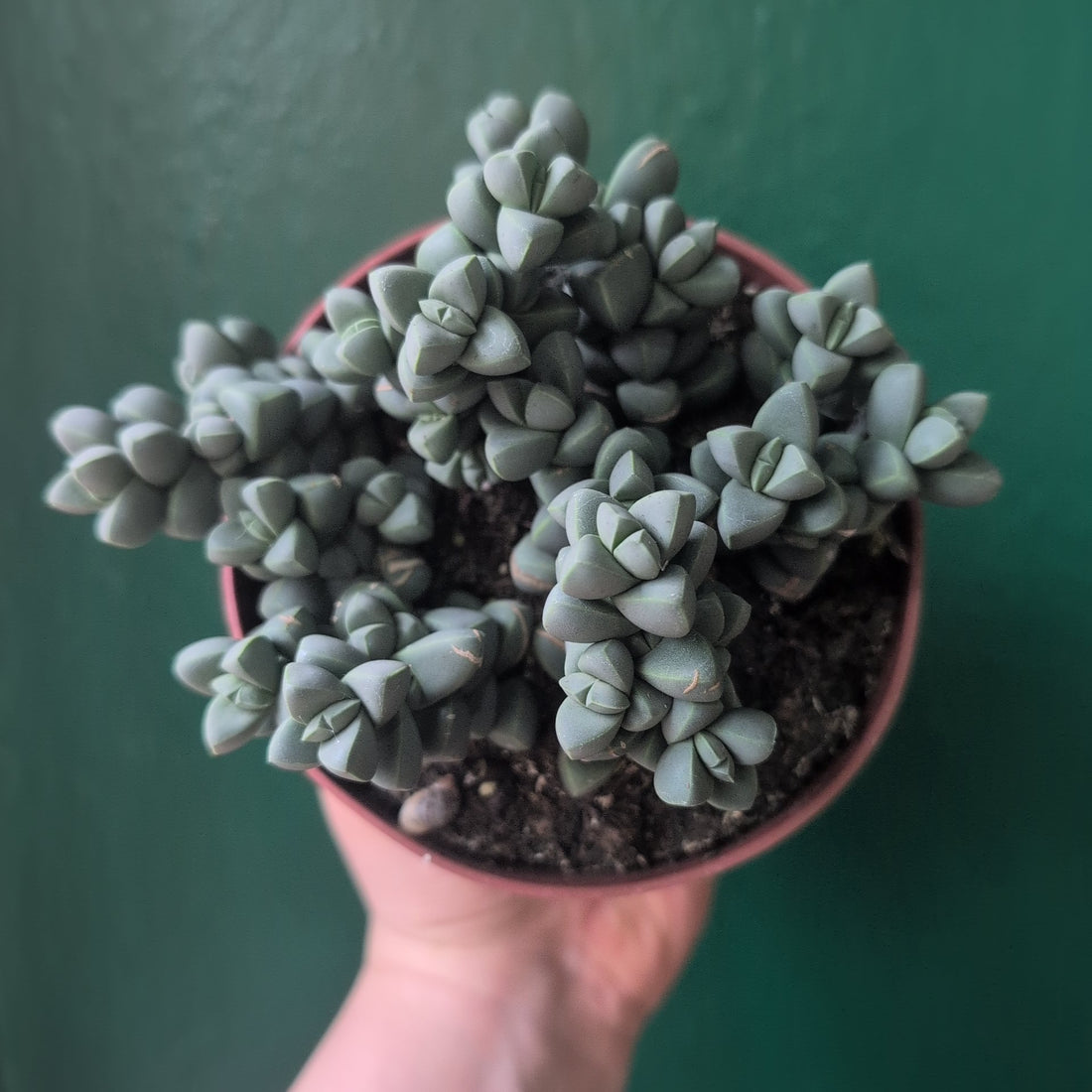Nepenthes Care Guide
Enter the mesmerising realm of Nepenthes, more commonly known as Tropical Pitcher Plants or Monkey Cups. Native to the lush tropical regions of Southeast Asia—including Borneo, Sumatra, Malaysia, the Philippines, India, and northern Australia—these carnivorous plants belong to a fascinating genus with over 170 known species, along with countless cultivated and naturally occurring hybrids. Their incredible diversity and adaptation to a wide range of habitats make it difficult to provide a one-size-fits-all care guide.
Some species, like the tiny Nepenthes argentii, remain miniature in size, while others, such as the enormous Nepenthes rajah, have been known to trap and digest small animals like rats. In their native jungles, Nepenthes species are generally divided into two main habitat groups: lowland and highland. Lowland Nepenthes thrive in warm, stable conditions with temperatures ranging from 20–30°C both day and night, and they require consistently high humidity. In contrast, highland Nepenthes prefer a wider temperature range of around 10–30°C, enjoying warmer days followed by cooler nights, a condition that mimics the elevation of their natural environment and is essential for their proper growth and health. One such example is the striking Nepenthes ‘Gaya’, which we proudly stock, making them perfect for growing indoors. Whether you're a beginner or an experienced grower, understanding whether your plant hails from lowland or highland regions is key to unlocking its full potential and appreciating the remarkable beauty and complexity of these living wonders.
Far more than botanical curiosities, Nepenthes are masterful insectivores with a unique and deadly adaptation that allows them to thrive in nutrient-poor environments where most plants would struggle. Their distinctive structure consists of three main parts: a narrow leaf, a curling tendril, and a cup-like trap at the end of the tendril, often referred to as the "monkey cup." These cups are frequently brightly coloured to attract prey and secrete a sweet-smelling nectar around the rim and inside, which not only lures insects in but also acts as a mild intoxicant and toxin. Once an unsuspecting insect ventures too close and loses its footing, it slips on the slick inner walls—lined with downward-pointing hairs—and tumbles into the liquid-filled chamber below. Inside, a pool of digestive enzymes slowly breaks down the prey, allowing the plant to absorb vital nutrients like nitrogen and phosphorus. This elegant yet ruthless mechanism is what enables Nepenthes to flourish in some of the harshest, most nutrient-deficient ecosystems on Earth. Depending on the species, these pitchers may form close to the ground or high in the canopy, meaning they can be grown in either standing or hanging pots. Unlike many other carnivorous plants, Nepenthes do not enter winter dormancy, making them year-round growers with consistent care. In this comprehensive guide, we’ll unlock the secrets to successfully growing and caring for these extraordinary and otherworldly plants.
Get ready to embark on a journey where gardening meets the wild and wonderful—welcome to the world of Nepenthes. !
How to Look After a Nepenthes
Nepenthes are captivating plants, but they do require specific conditions to truly thrive. There are many different species of nepenthes varying in habitat, so it is hard to give generalised advice for all, but this guide here is a good starting point. Here’s how to keep your monkey cup healthy and happy:
-
Light – Sunshine Lover -Nepenthes thrive in bright conditions but prefer to avoid harsh, direct sunlight. In the wild, they grow in the tree canopy where light is filtered. A sunny east- or west-facing windowsill is ideal. If natural light is limited, a plant grow light will help them get the energy they need to produce their vibrant pitchers. If your plant looks dull or floppy, it’s a sign it isn’t getting enough light.
-
Watering – Moist but Not Drenched - Always use distilled water, rainwater, or reverse osmosis water—tap water contains minerals that can harm Nepenthes. Keep the soil consistently moist but never waterlogged. Unlike bog-dwelling carnivorous plants, Nepenthes prefer to be watered from above and should not be left standing in water. A light splash daily is ideal, and misting the leaves and pitchers helps maintain humidity. If your plant arrives with empty pitchers, fill them about one-third full to prevent them from drying out. This encourages the plant to keep its cups topped up with its own fluid and digestive enzymes.
-
Feeding – Let Nature Do the Work - Nepenthes are skilled hunters and usually catch their own prey, especially when grown outdoors. Indoors, if insects are scarce, you can give them a little help during the growing season (spring to early autumn). Feed just one pitcher every 2–3 weeks with dried insects such as crickets—simply drop the food into the cup. Be careful not to overfeed; your plant needs time to fully digest before it’s ready for the next meal.
-
Humidity & Temperature – Moderate Conditions - Nepenthes thrive in environments that mimic their natural habitats. Lowland species prefer consistently warm conditions, around 25 °C with only a slight dip at night. They dislike cold temperatures and need high humidity (around 80%). A terrarium or tropical greenhouse is ideal if you can’t provide these conditions. Highland species enjoy more variation, with daytime temperatures around 20 °C and cooler nights near 15 °C. They do well in 60% humidity, making them suitable for windowsills or bathrooms. A humidifier can help boost humidity levels if needed. Many hybrids fall between these two groups, making them more forgiving and ideal for beginners. Nepenthes ‘Gaya’ is a good choice if you struggle with keeping up the humidity as it can tolerate lower humidity than others.
How to Care for a Nepenthes in Winter
Winter Care – Rest, Not Dormancy - Unlike many other carnivorous plants, Nepenthes do not go into full winter dormancy. During the colder months, they may slow down, with pitchers dying back and little to no new ones forming. Don’t worry—this is normal. Simply trim away any dead cups, and keep caring for the plant as usual. Come spring, it will bounce back with fresh growth and vibrant new pitchers.
When to Repot a Nepenthes
Nepenthes benefit from repotting every 2–3 years to refresh the soil and encourage healthy growth. Repot sooner if the plant looks overcrowded or roots begin pushing through the drainage holes. Use a specialist mix rather than standard potting soil, as Nepenthes are highly sensitive to nutrients. A well-draining blend of equal parts peat, perlite, long-fibre sphagnum moss, and fine orchid bark works best, providing both aeration and moisture retention. Repot during the growing season, ideally in spring, when the plant is most active and can recover quickly. Handle the roots gently, and water thoroughly afterwards to help it settle into its new home.
Best Soil for a Nepenthes
For best results, use equal parts peat, perlite, long fibre moss and fine orchid bark which provides excellent moisture retention while maintaining good drainage. Avoid regular potting soil, as it contains minerals and fertilisers that can be harmful to Nepenthes.
Nepenthes Information and Facts
How Do Nepenthes Work?
The pitchers of nepenthes are uniquely adapted to lure and trap a wide variety of unsuspecting insects. These traps use a combination of visual and chemical cues to entice their prey. Brightly coloured and often strikingly patterned, the pitchers produce a sweet, intoxicating nectar around the rim, drawing insects toward the opening.
Once an insect lands, it often loses its footing on the slick inner surface, which is coated with waxy secretions and lined with downward-pointing hairs that prevent escape. The prey eventually falls into a pool of digestive enzymes at the base of the pitcher, where it is broken down. The plant then absorbs the nutrients.
What Does a Nepenthes Eat?
Insectivorous Diet: Primarily consumes insects like flies, spiders, ants, beetles and crickets. Avoid feeding it non-insect food.
Do Nepenthes Flower?
Yes, Nepenthes do flower, though it’s uncommon indoors. In their natural habitat, they’re more likely to bloom in autumn. When they do, the plant produces a tall inflorescence that looks quite different from its usual leaves—often compared to a miniature corn on the cob. The flowers themselves are small, typically green or brownish, and appear in spike-like clusters.
How Big Can Nepenthes Get
Size – From Tiny to Giant - Nepenthes come in a wide range of shapes and sizes. At the largest end, Nepenthes rajah can produce pitchers over 41 cm tall that hold up to 3.5 litres of fluid. In contrast, the diminutive Nepenthes argentii produces pitchers barely 1–2 cm high. This incredible variety makes the genus one of the most fascinating groups of carnivorous plants to grow.
